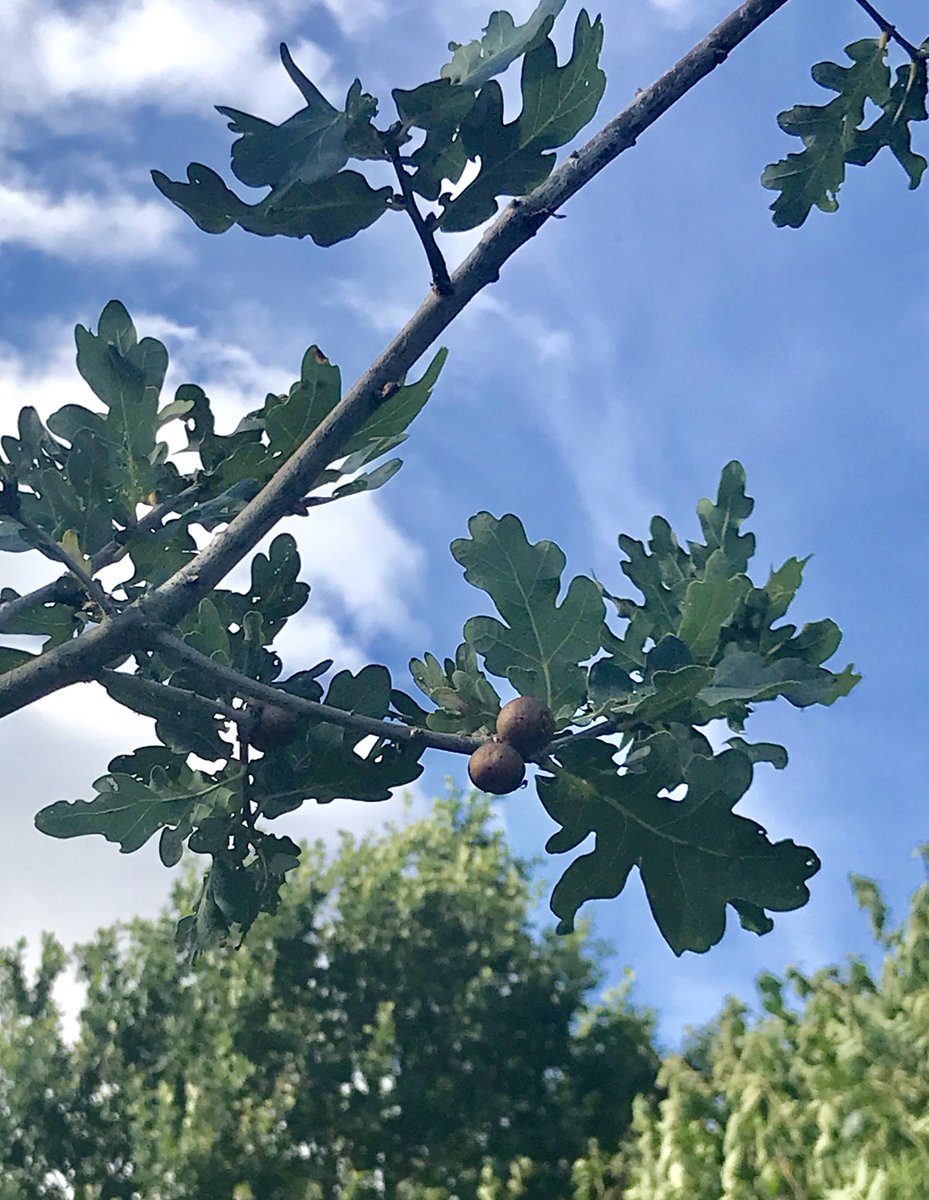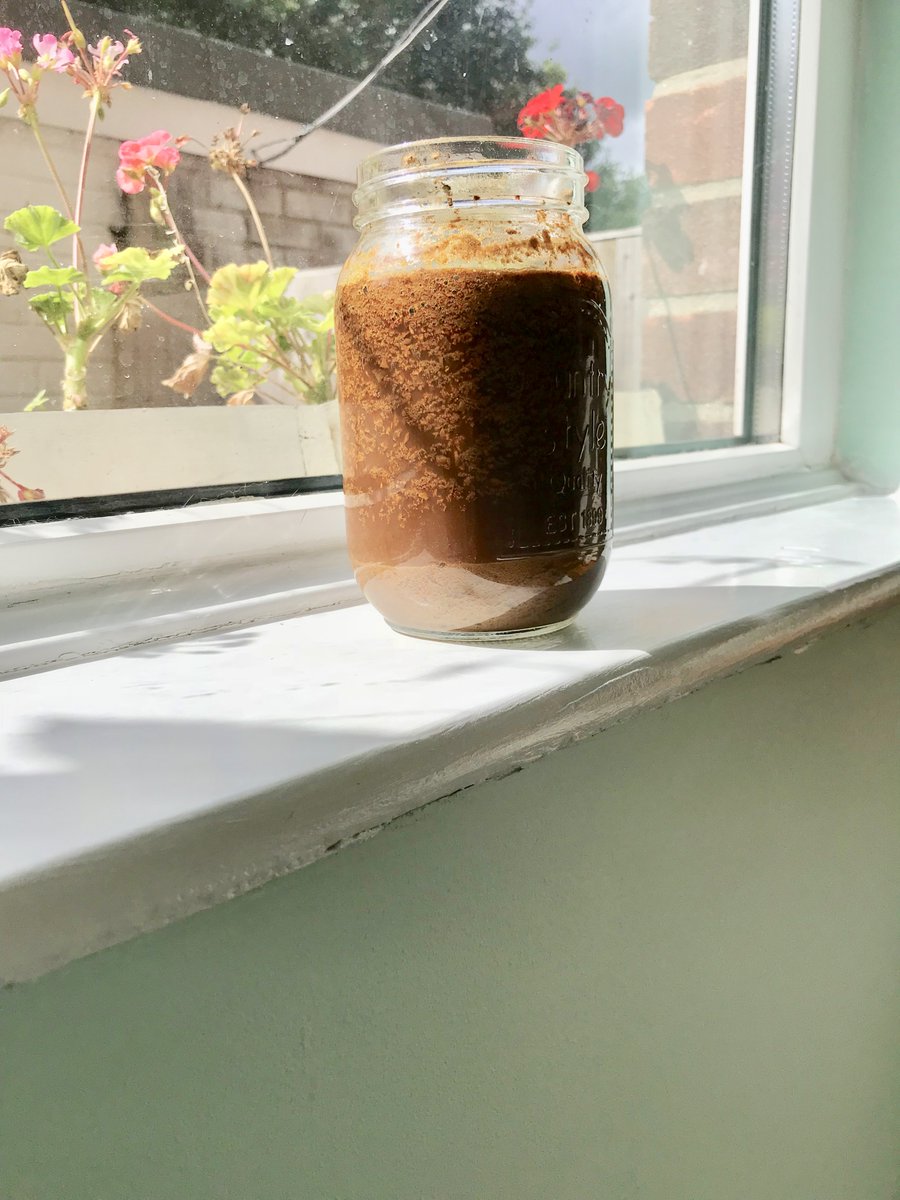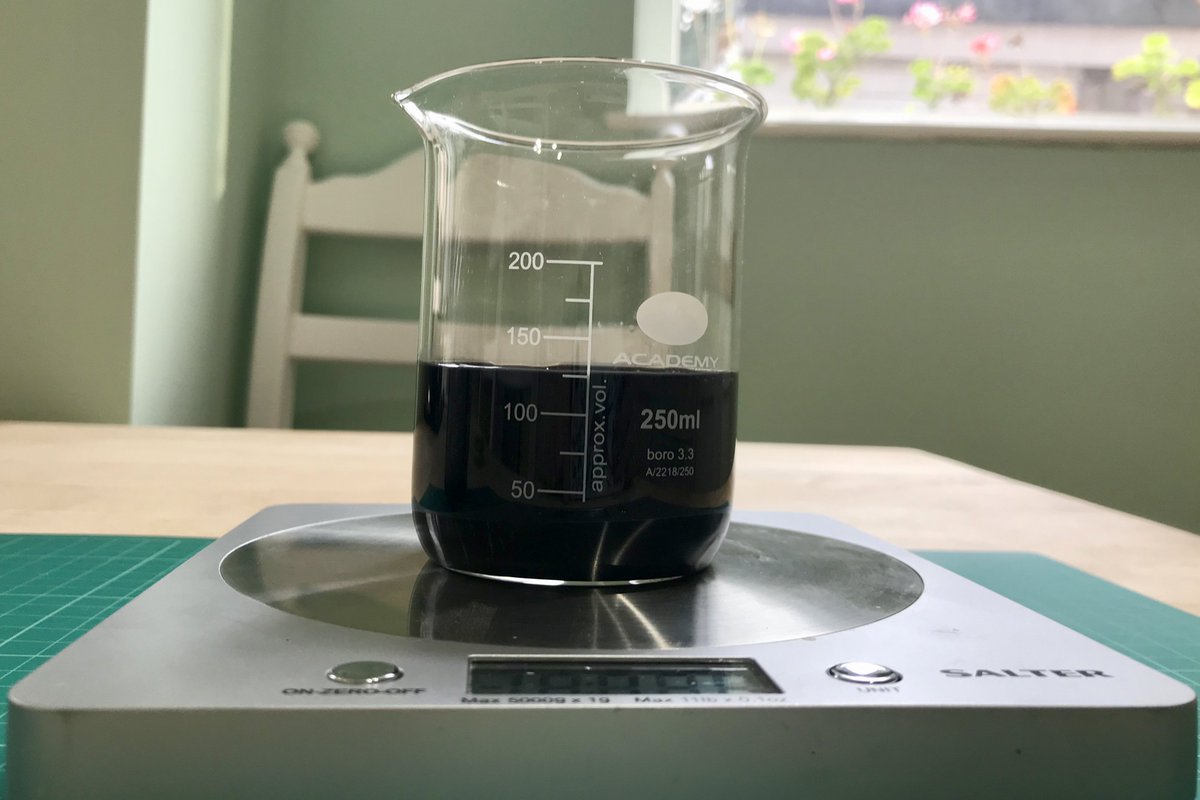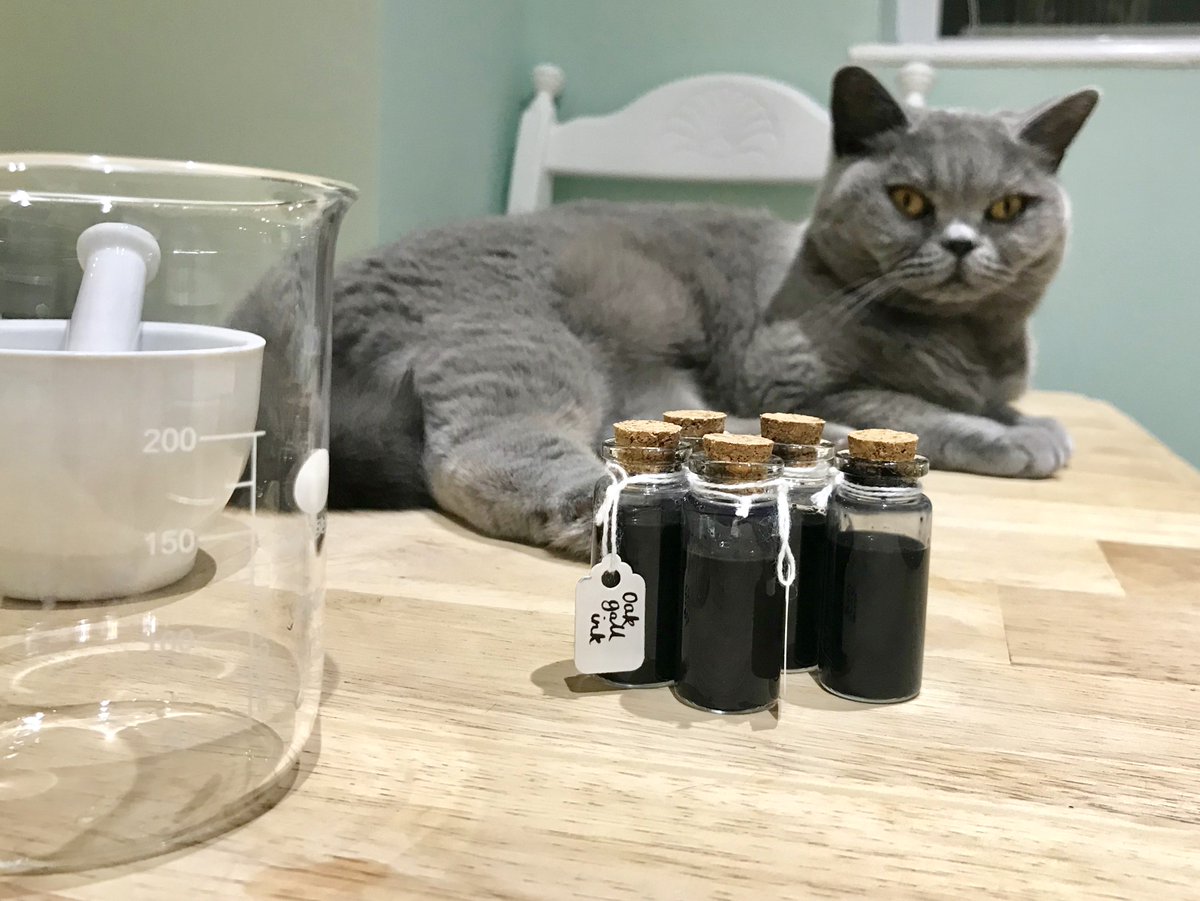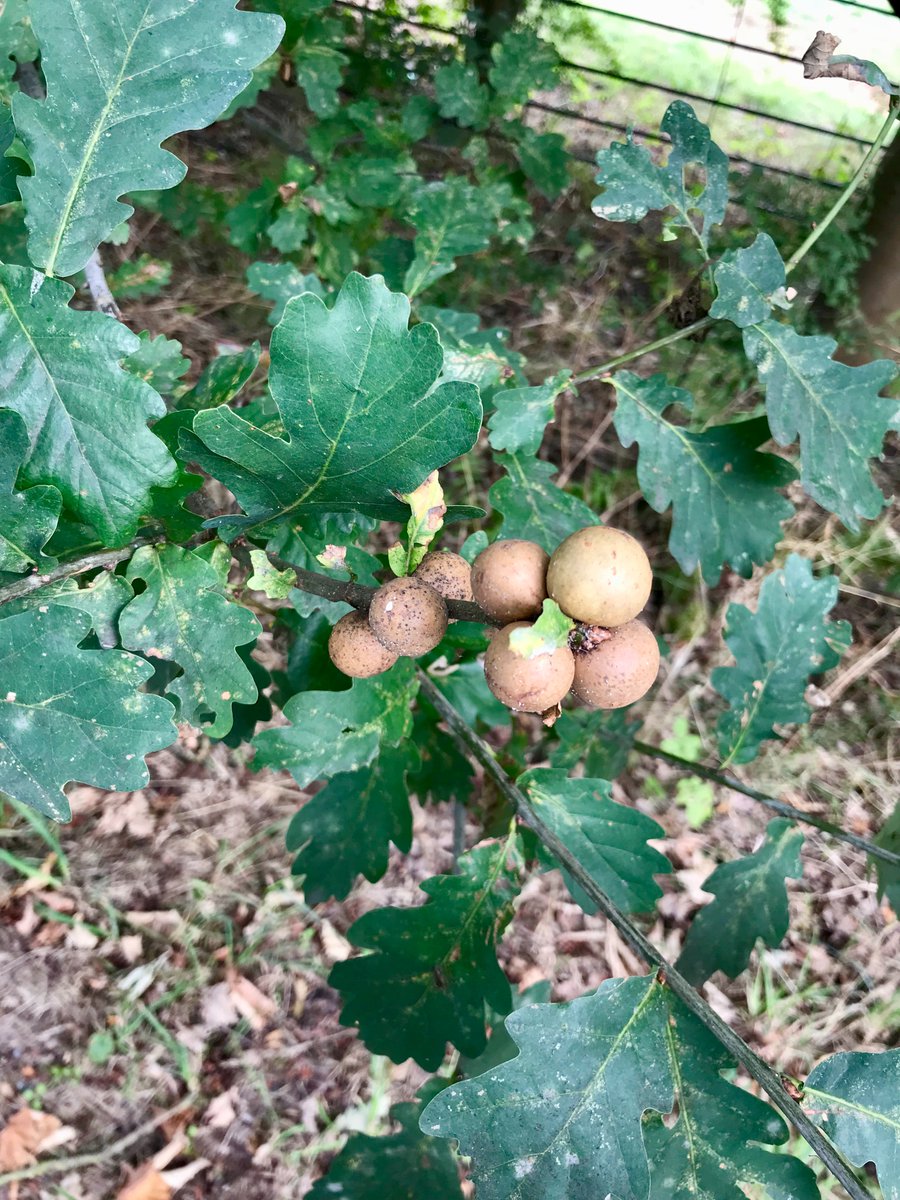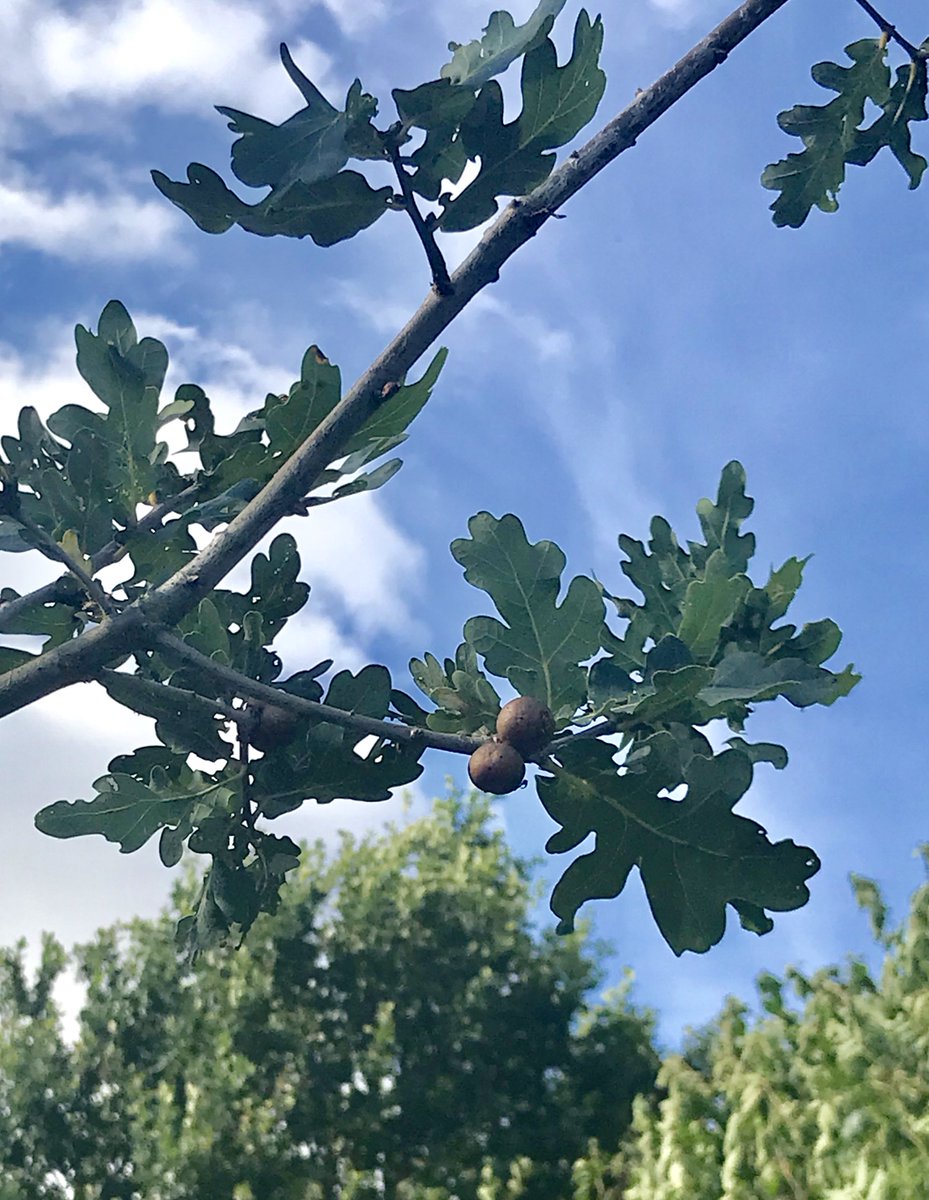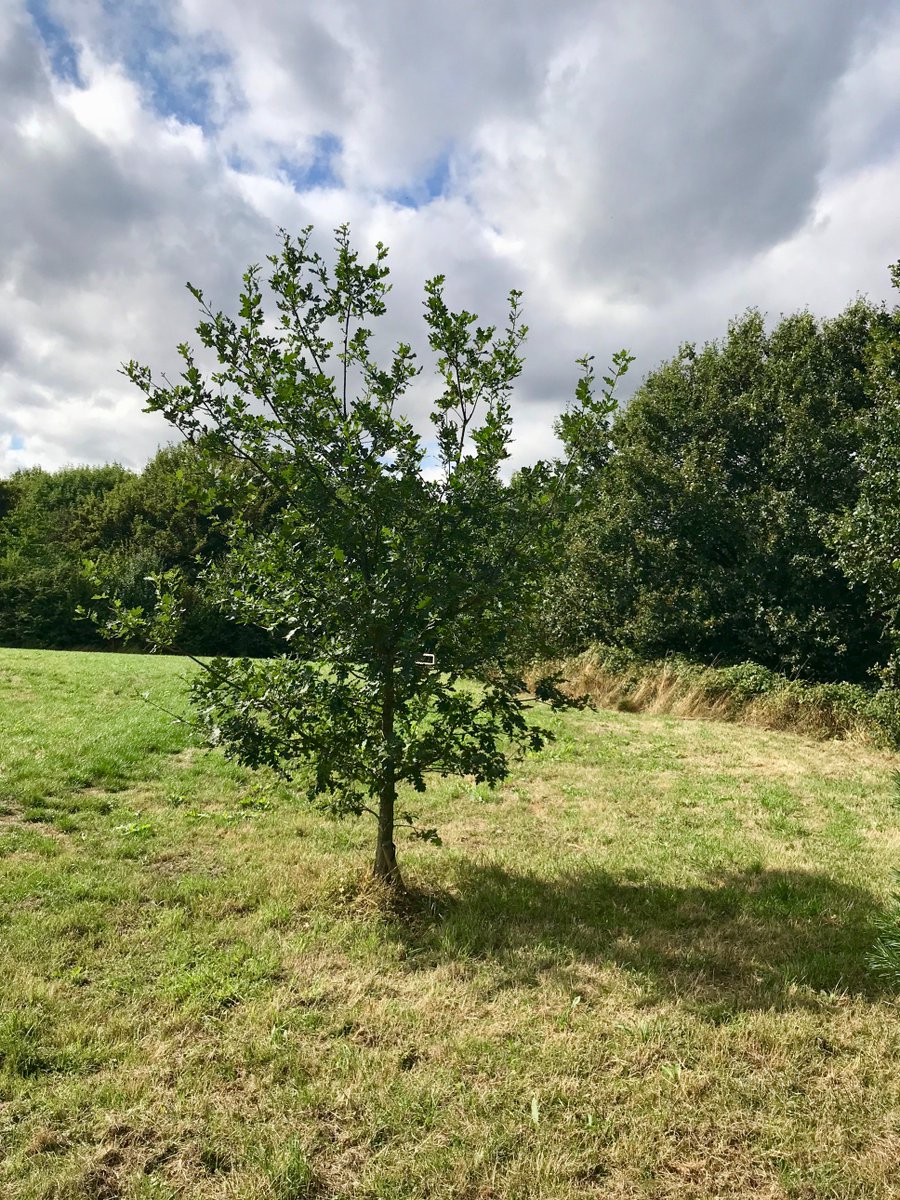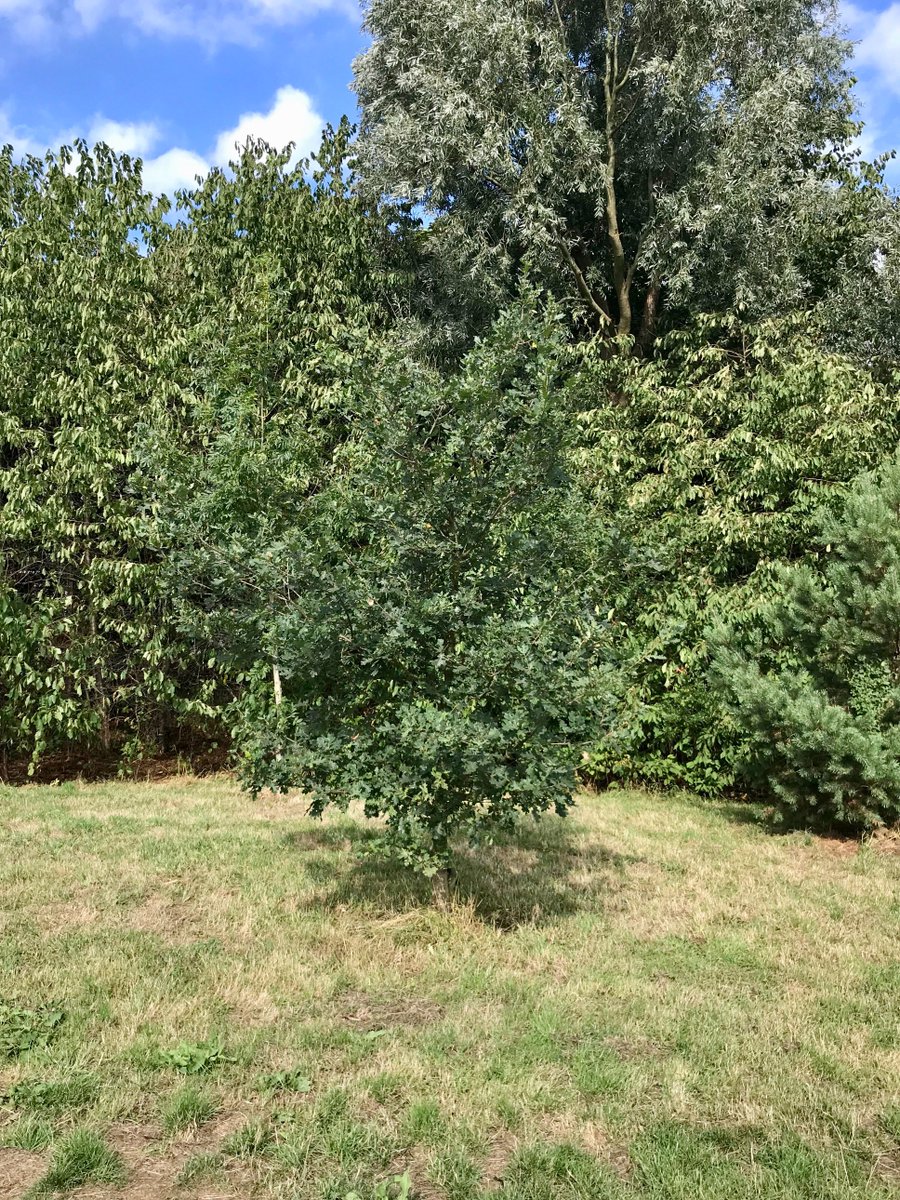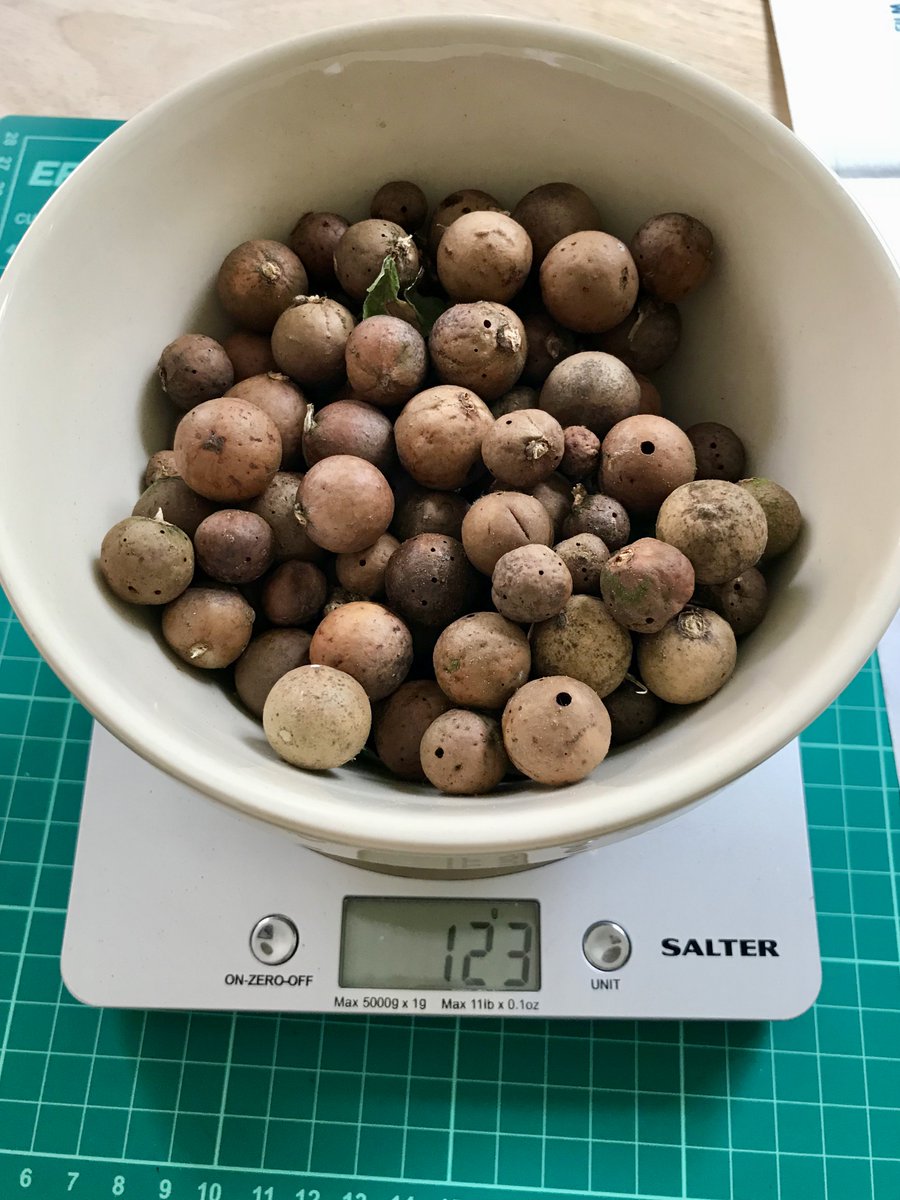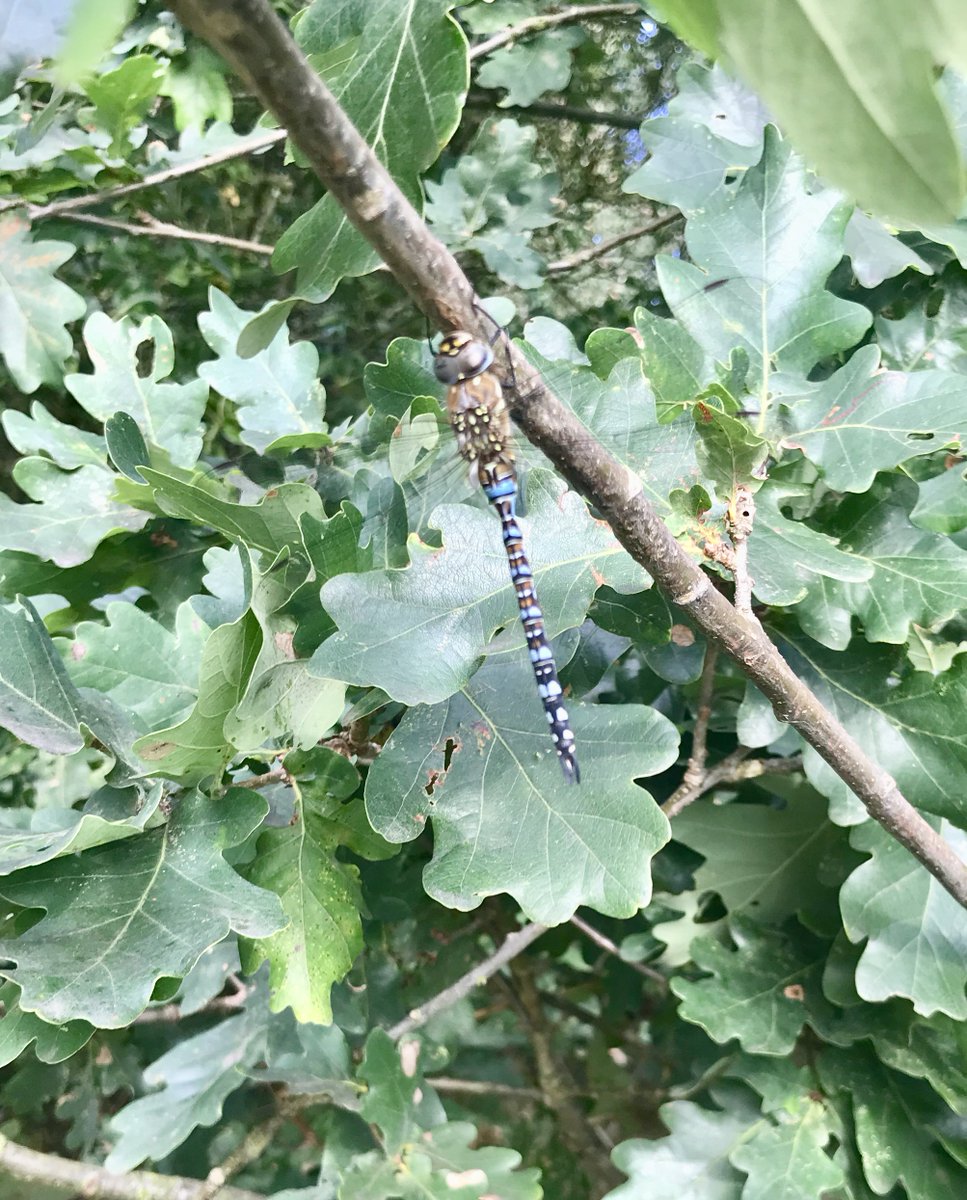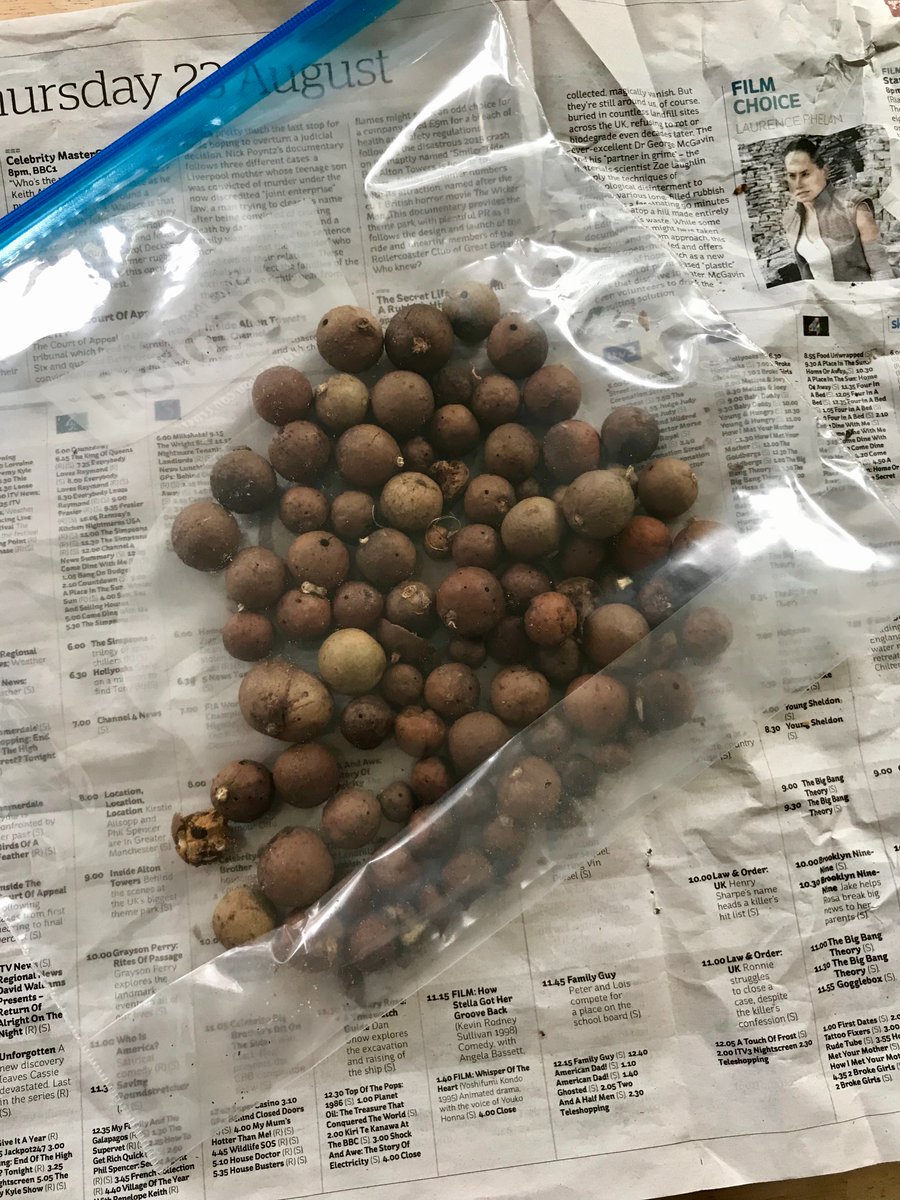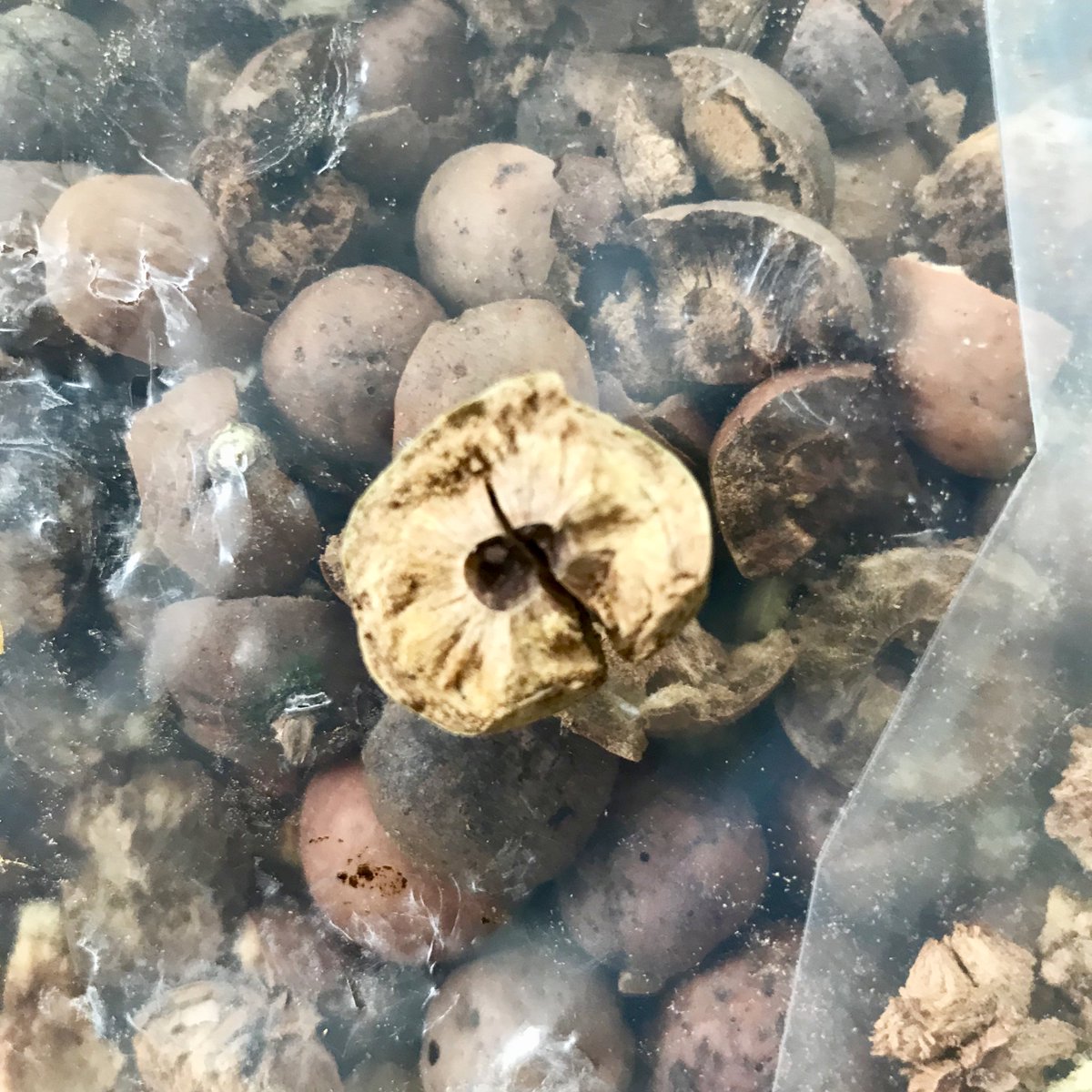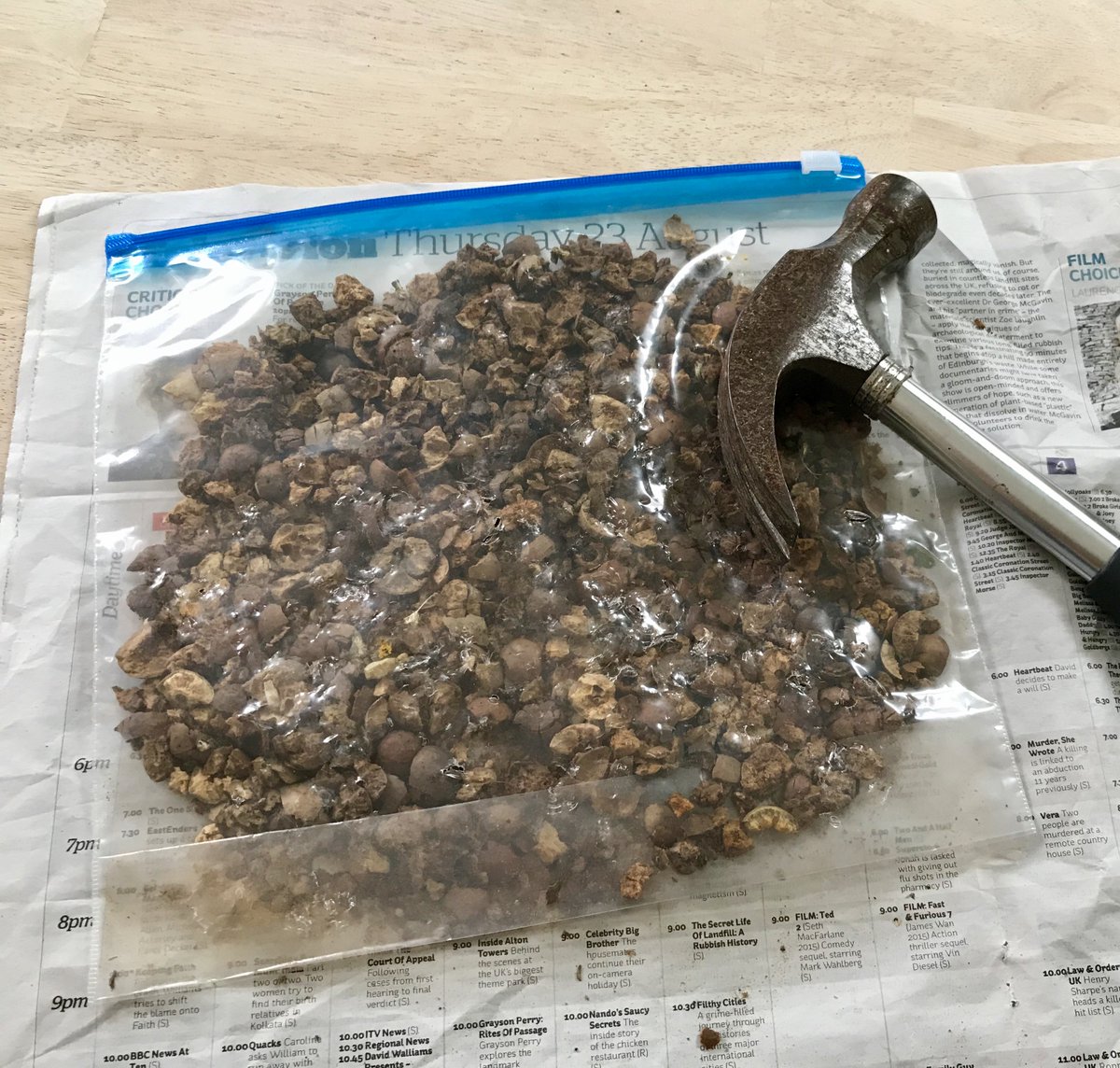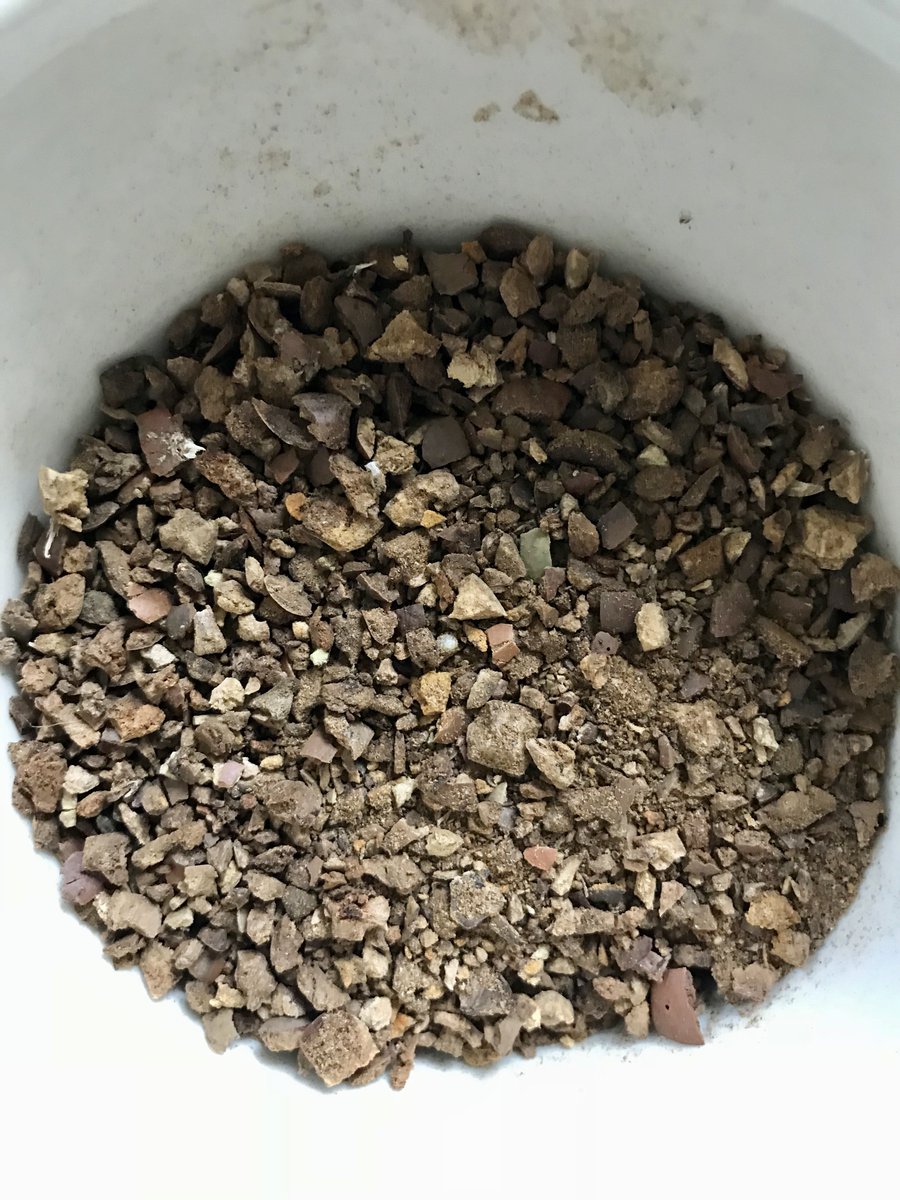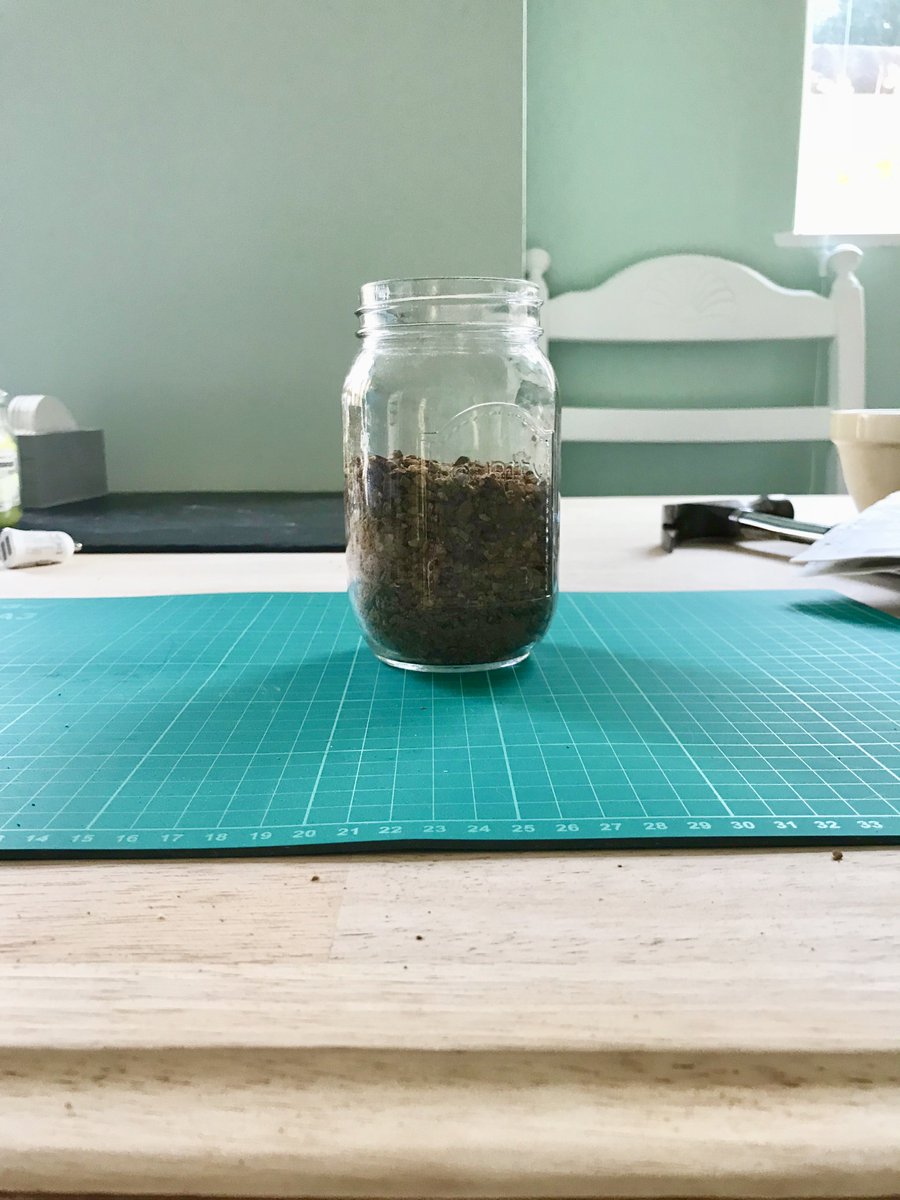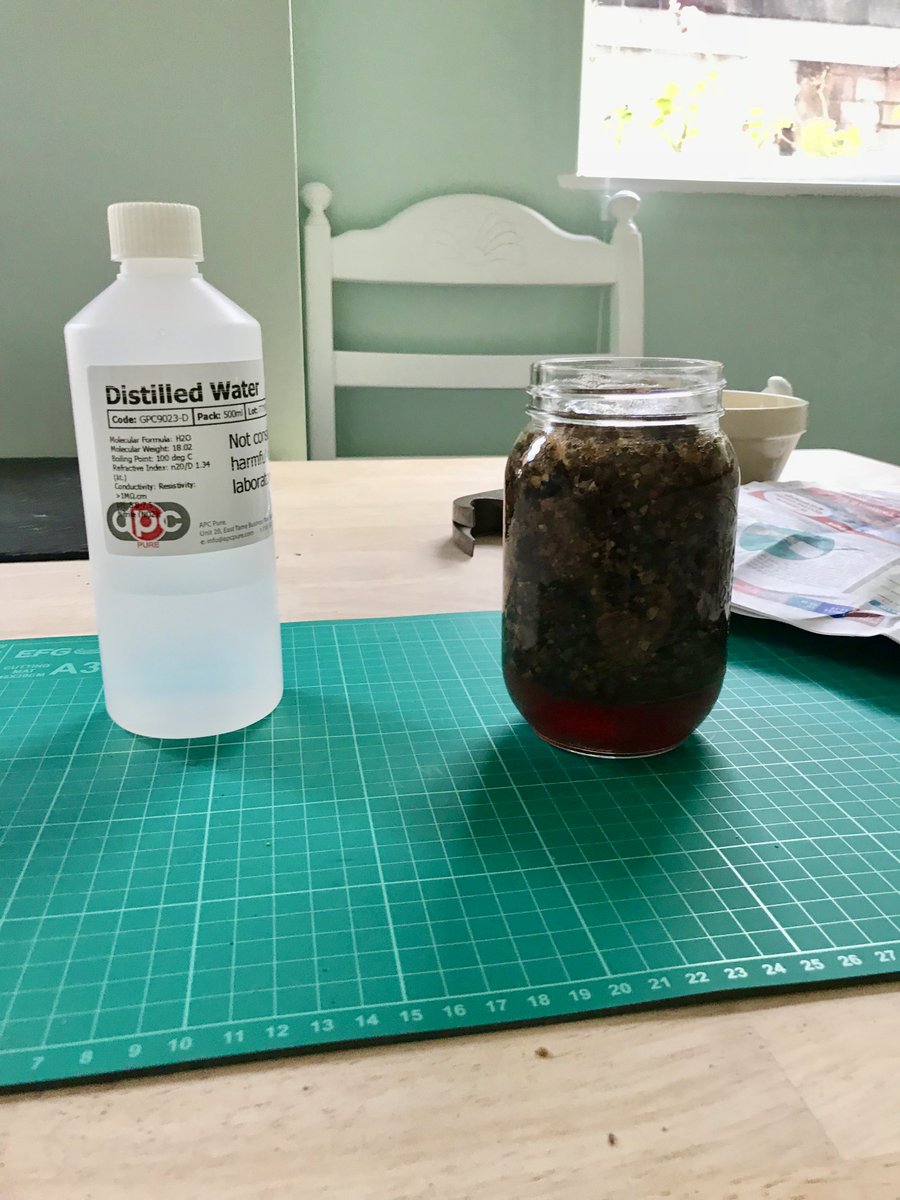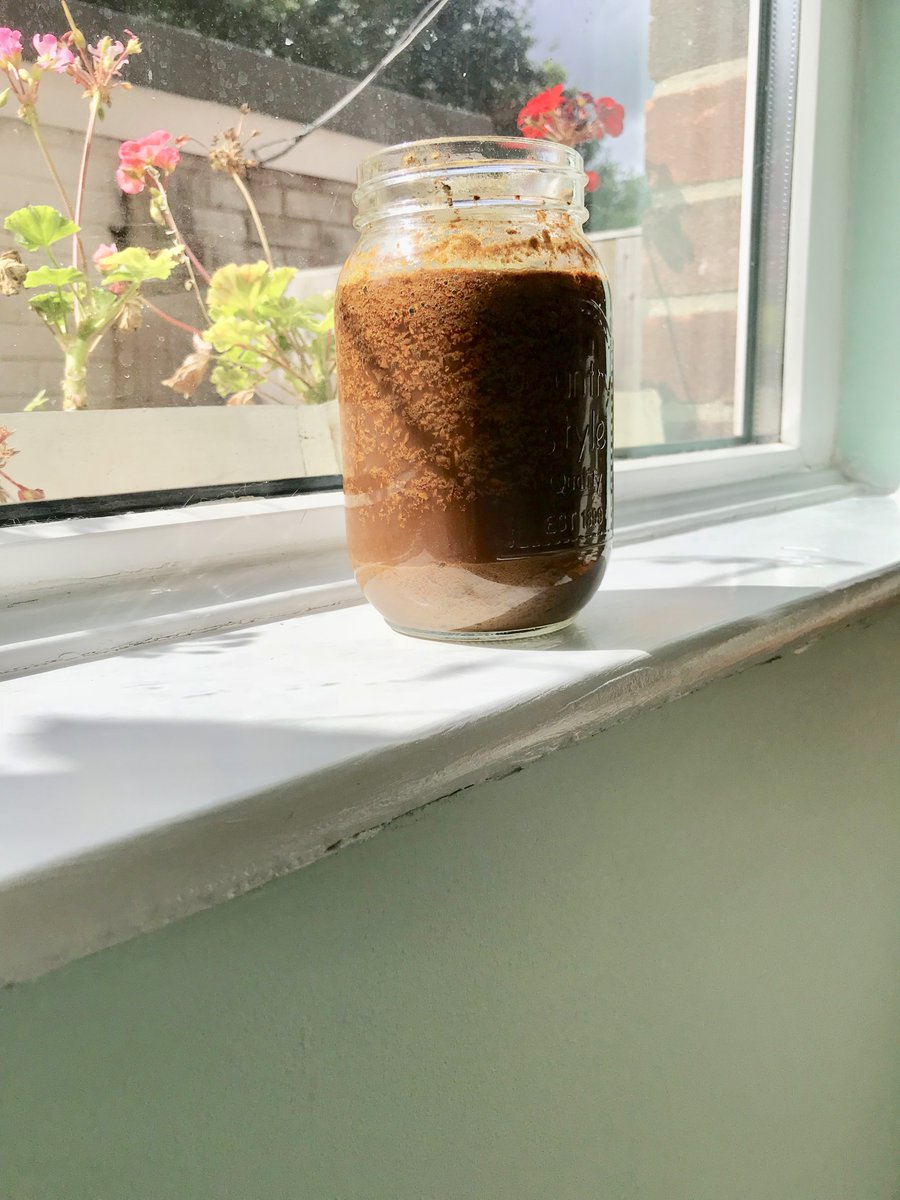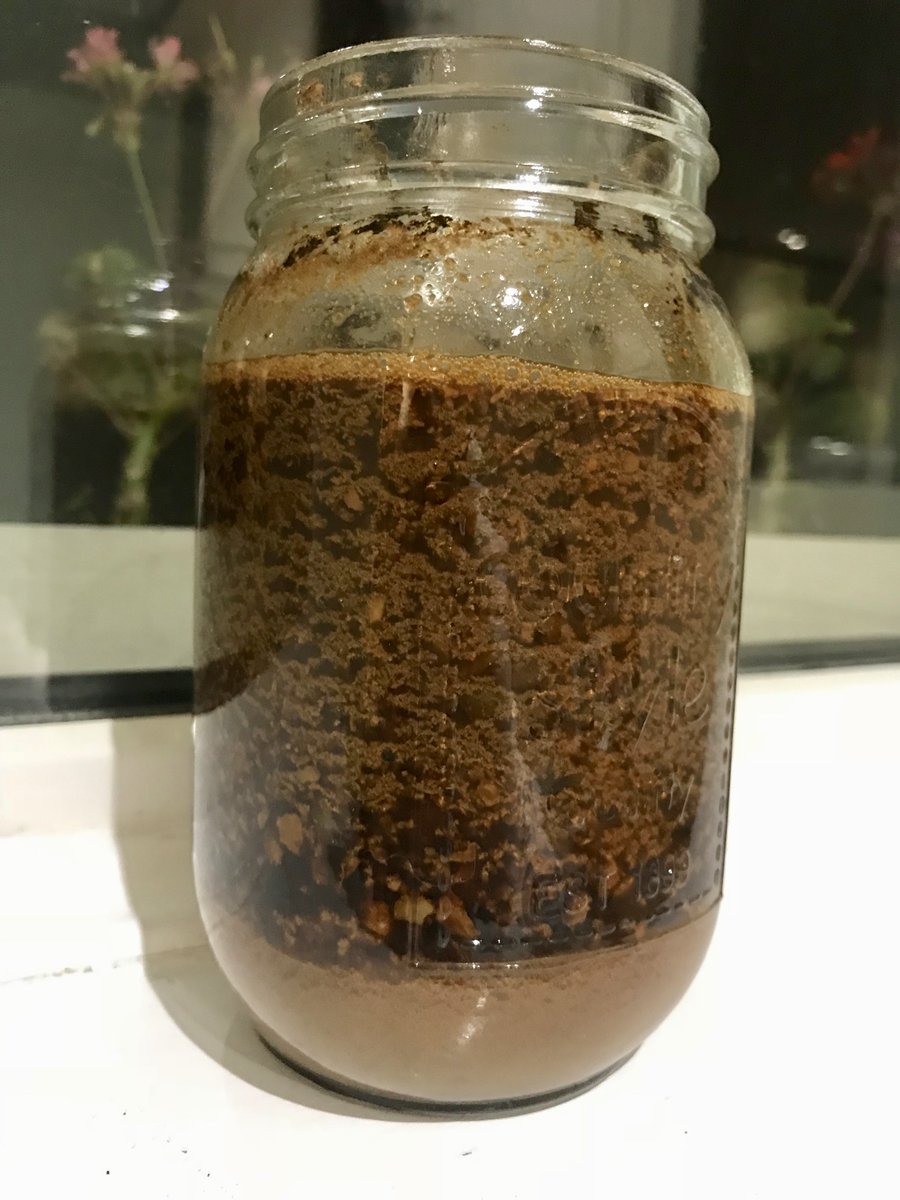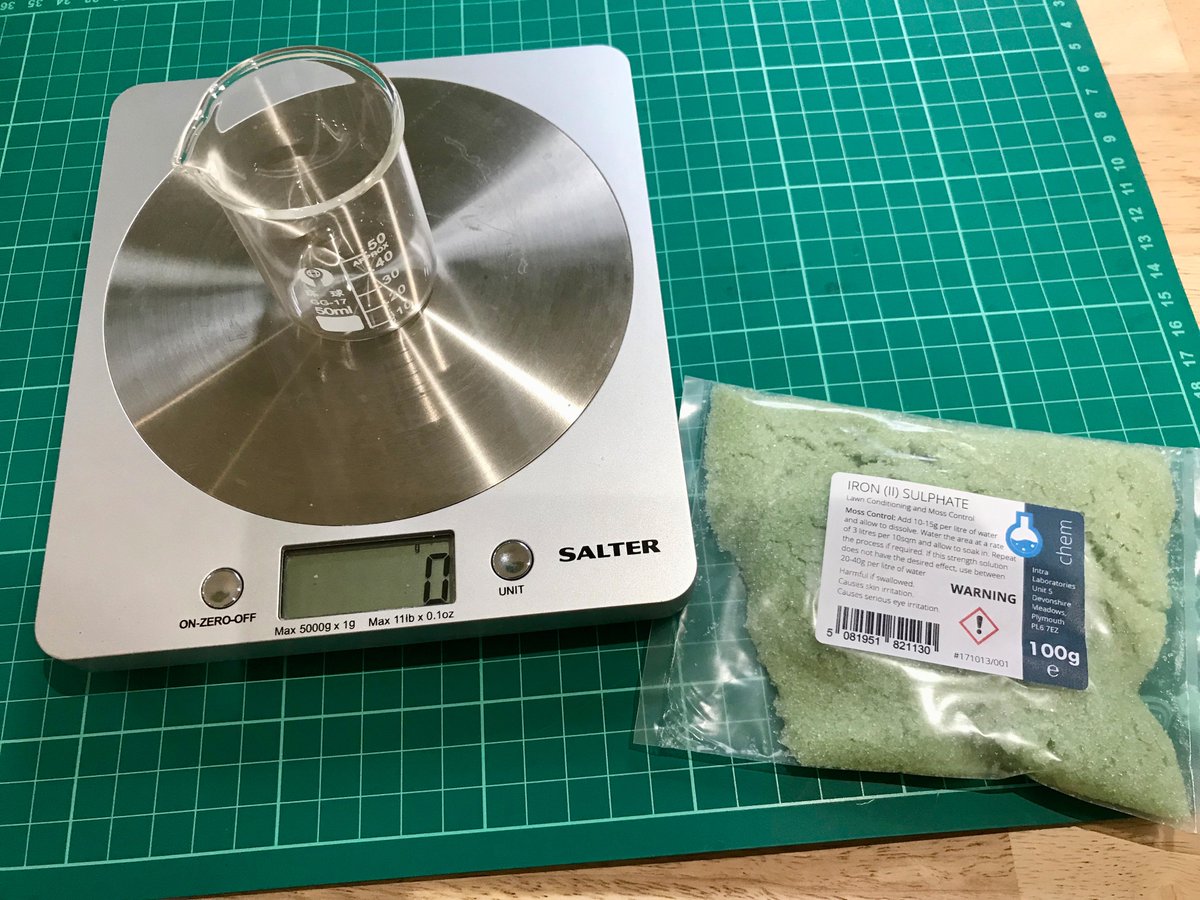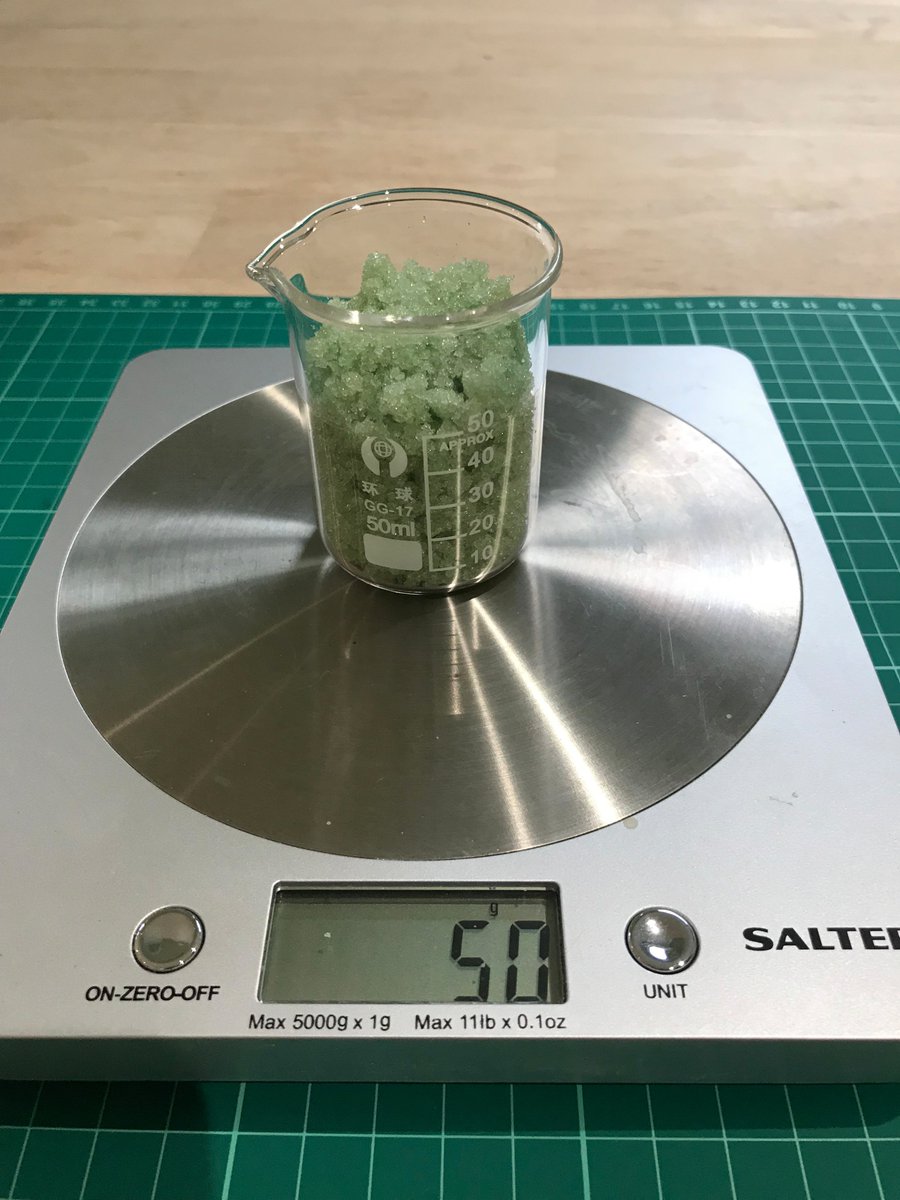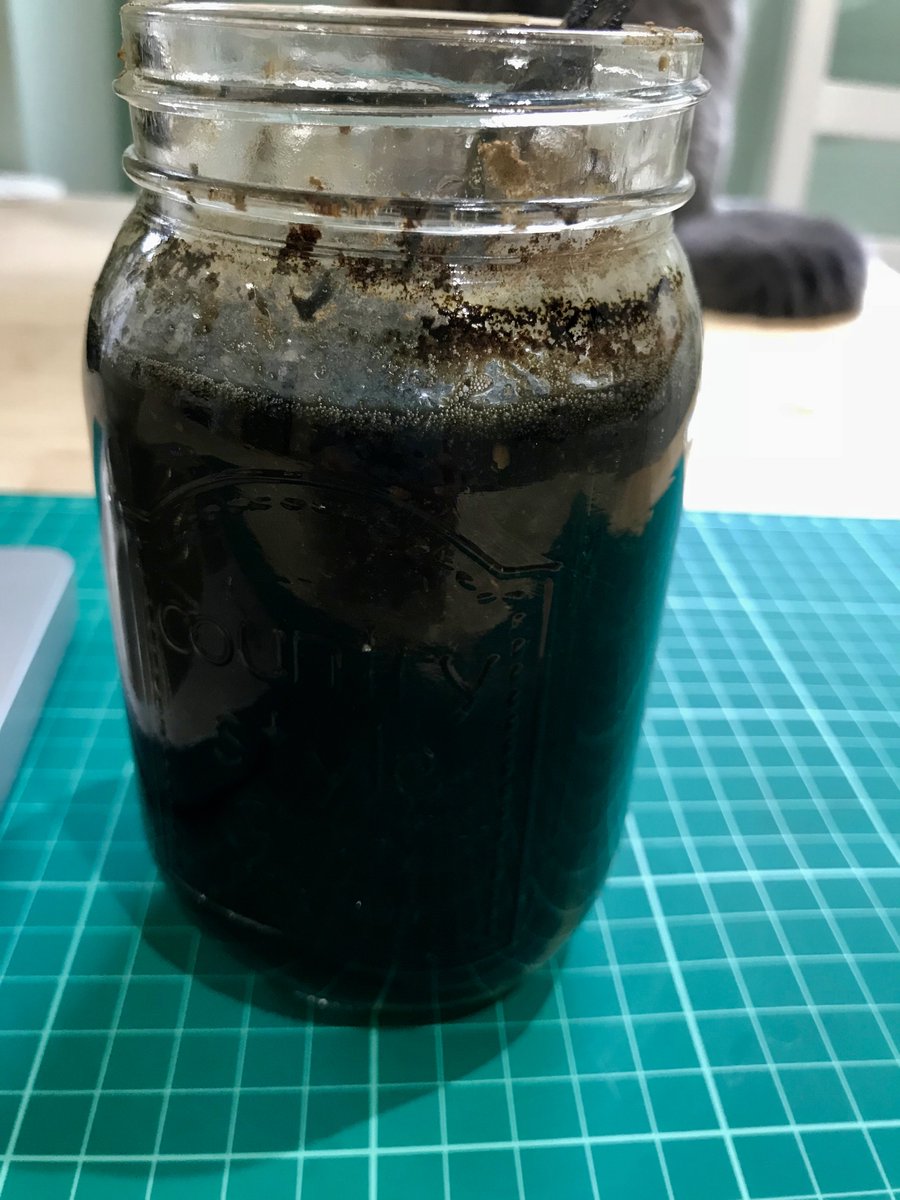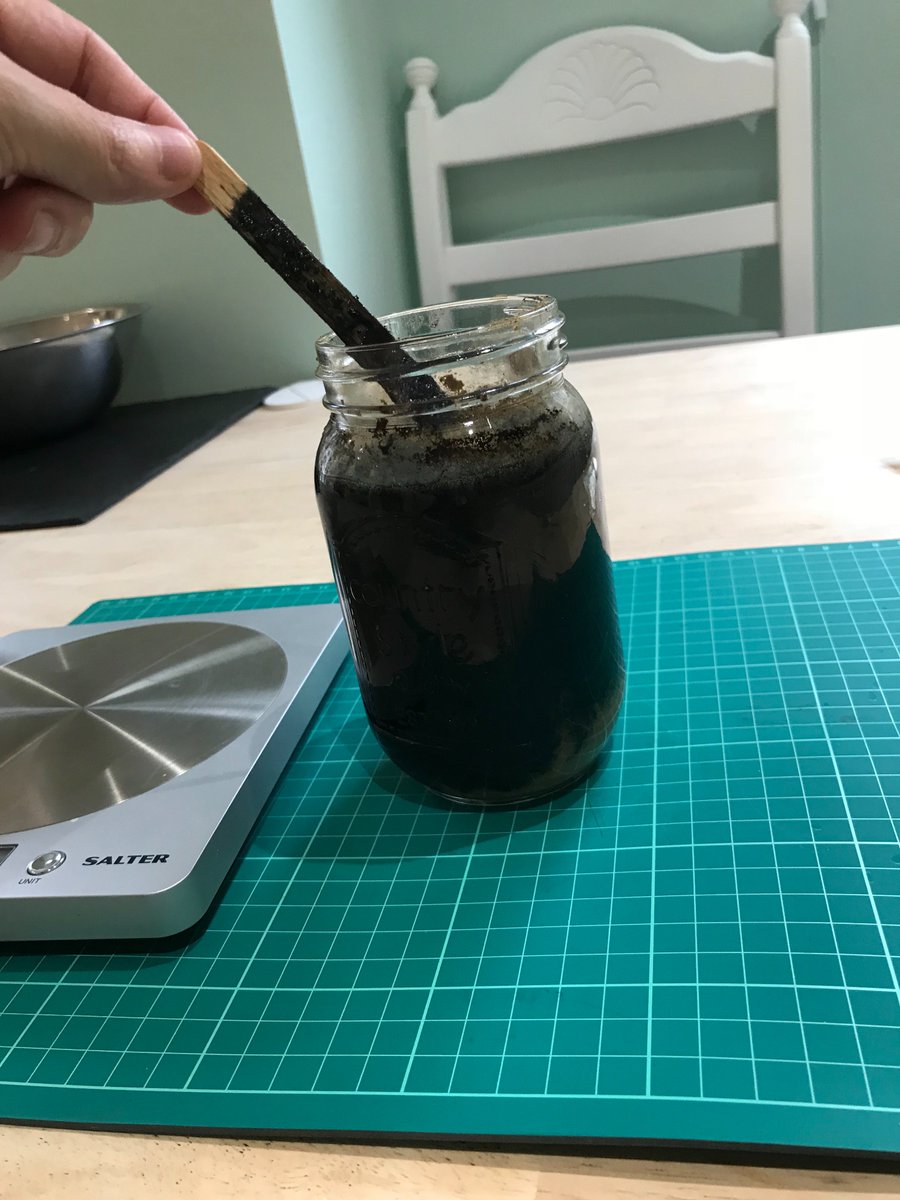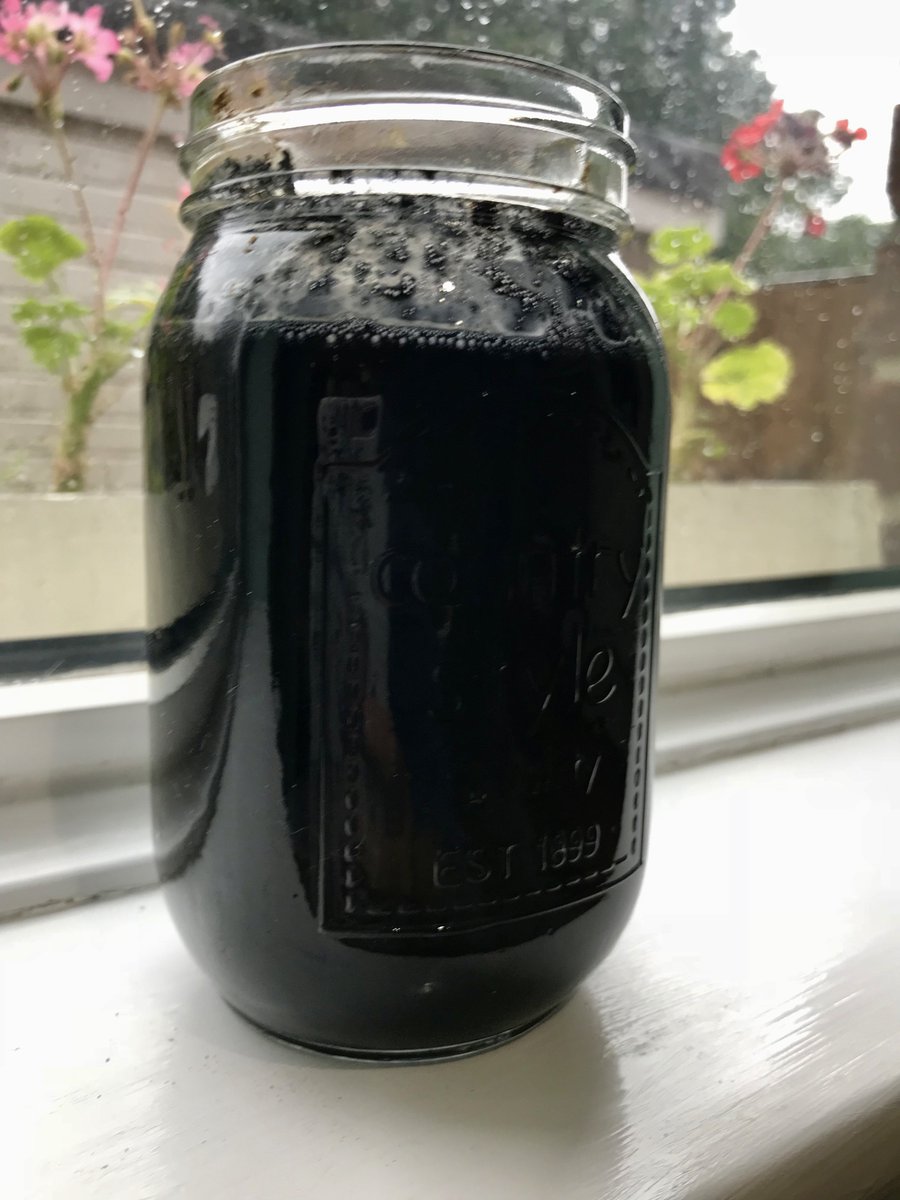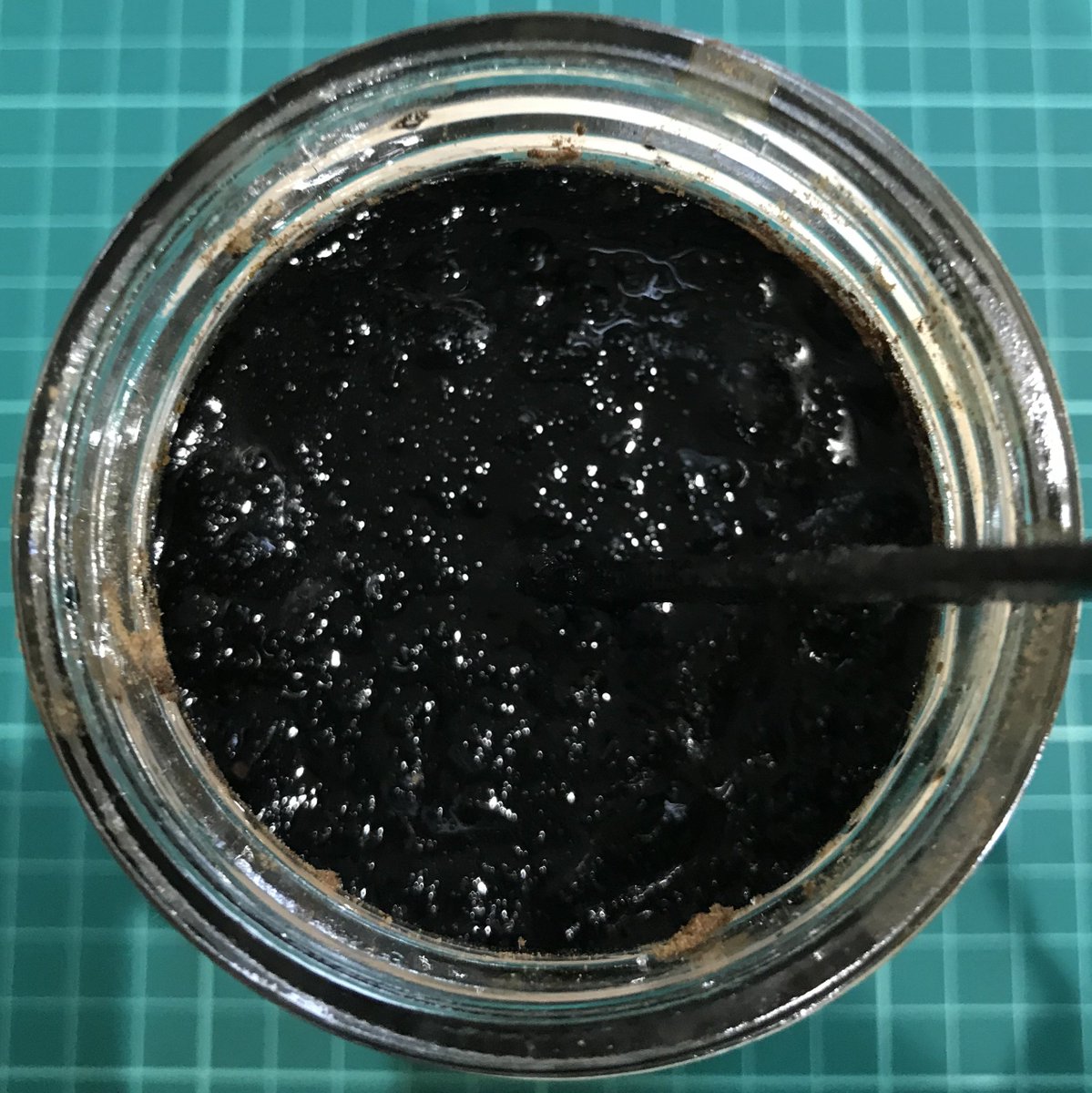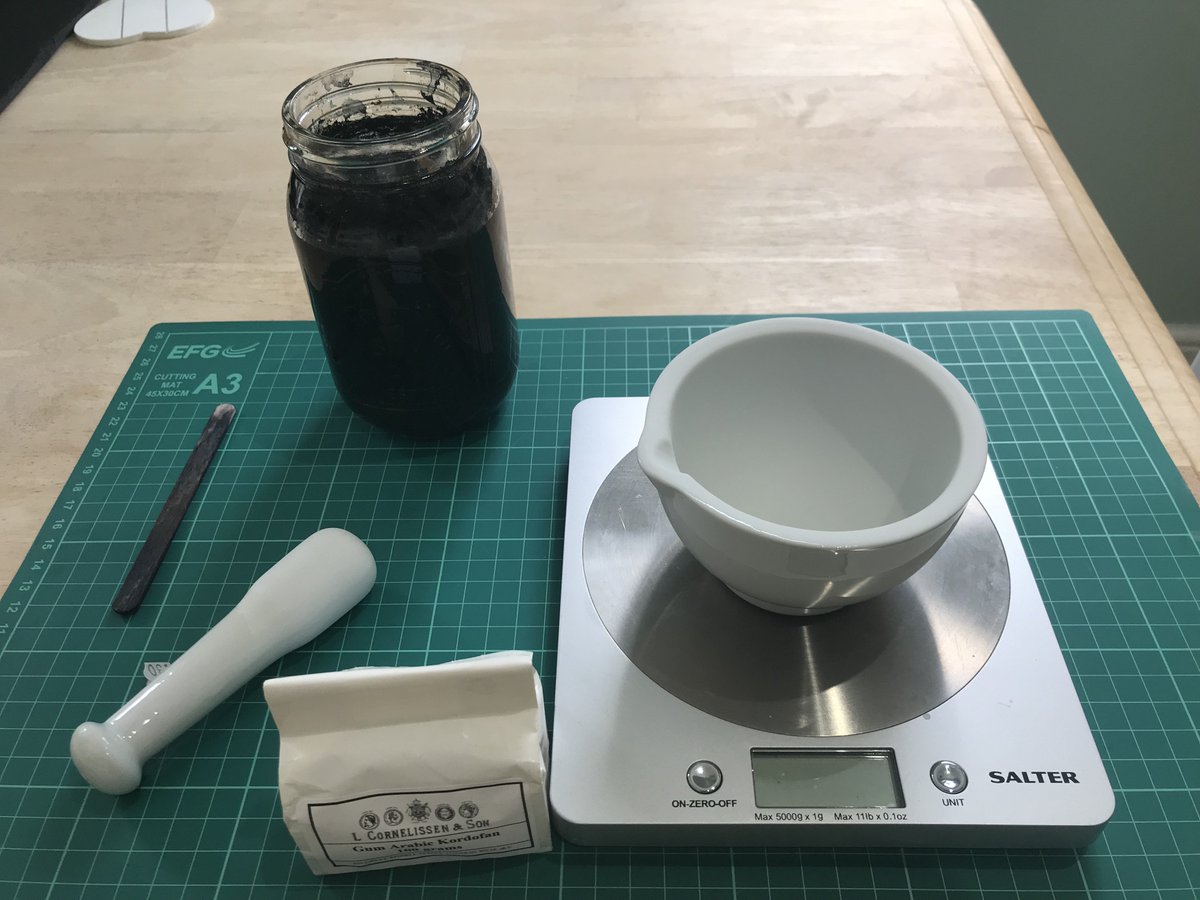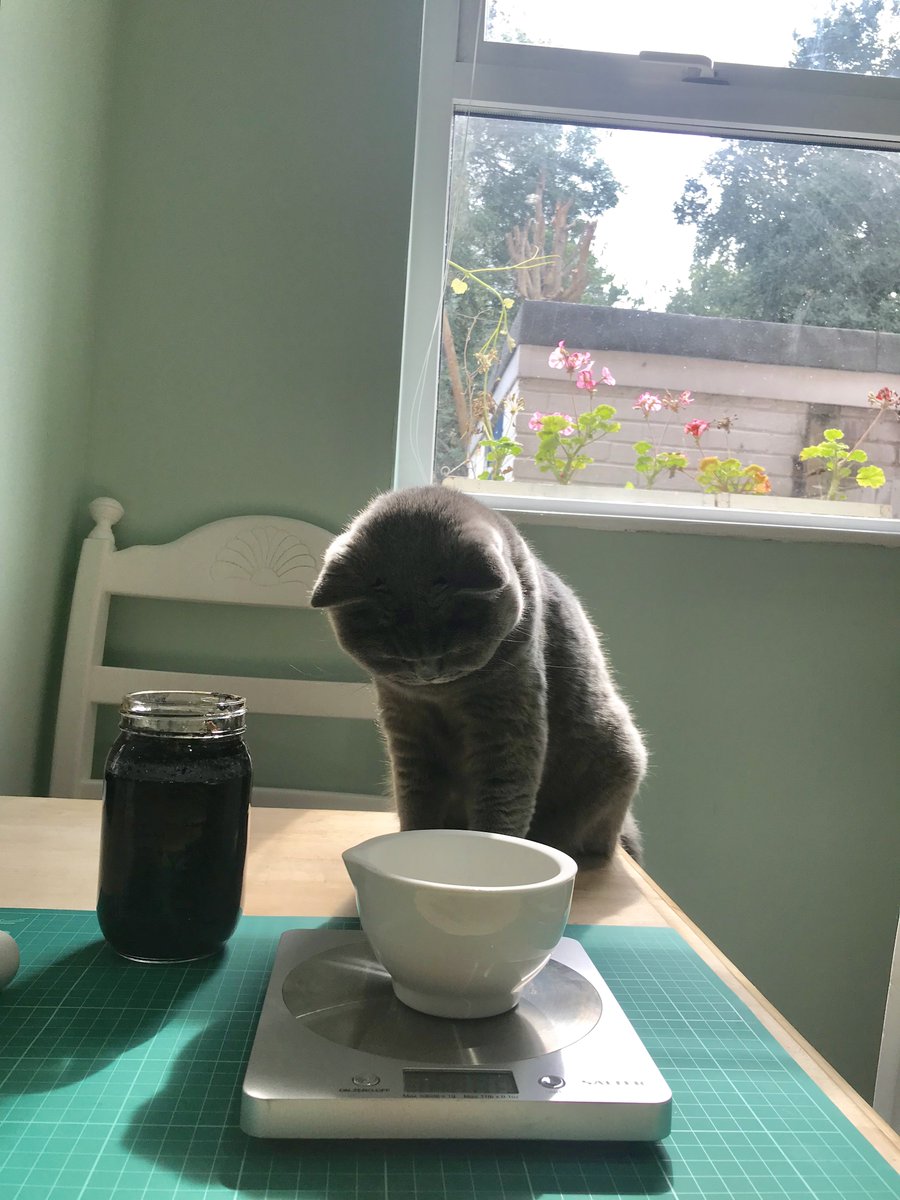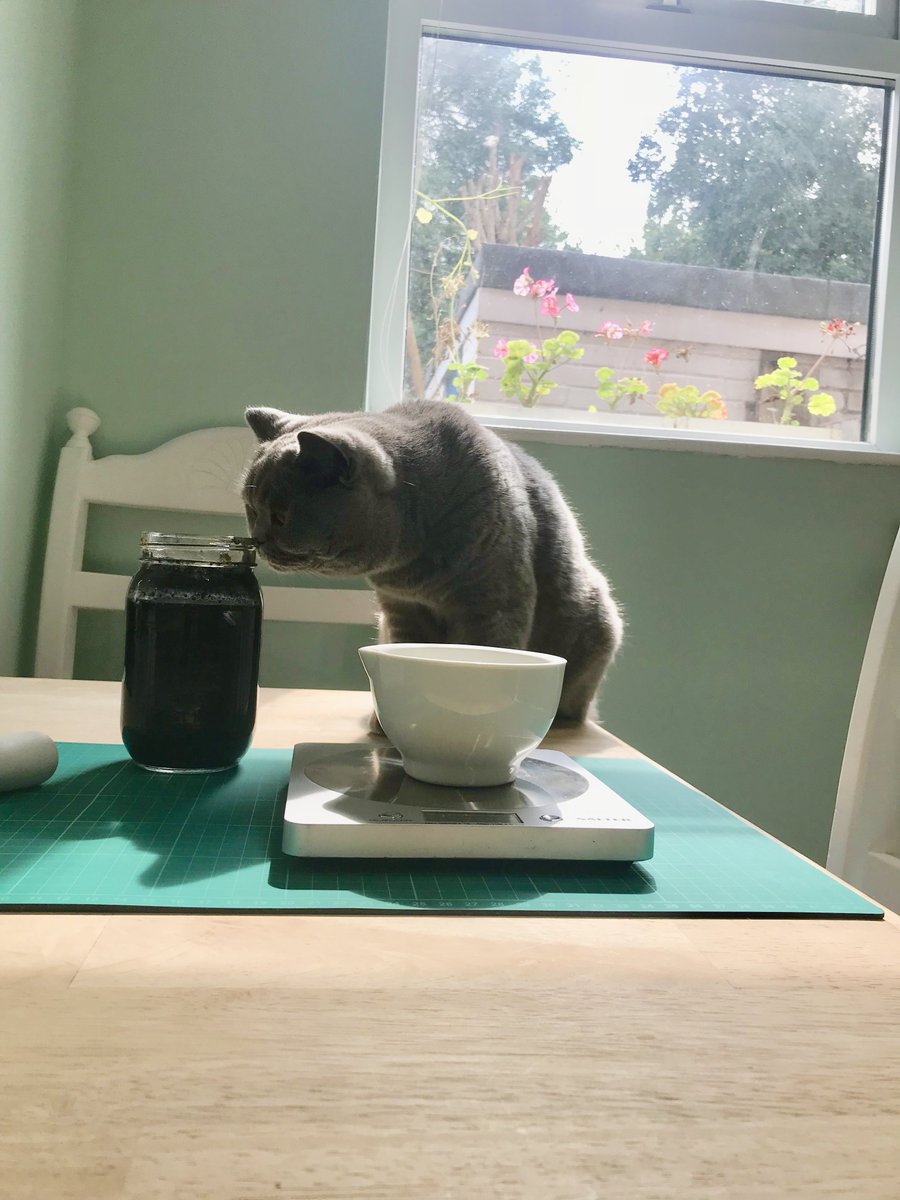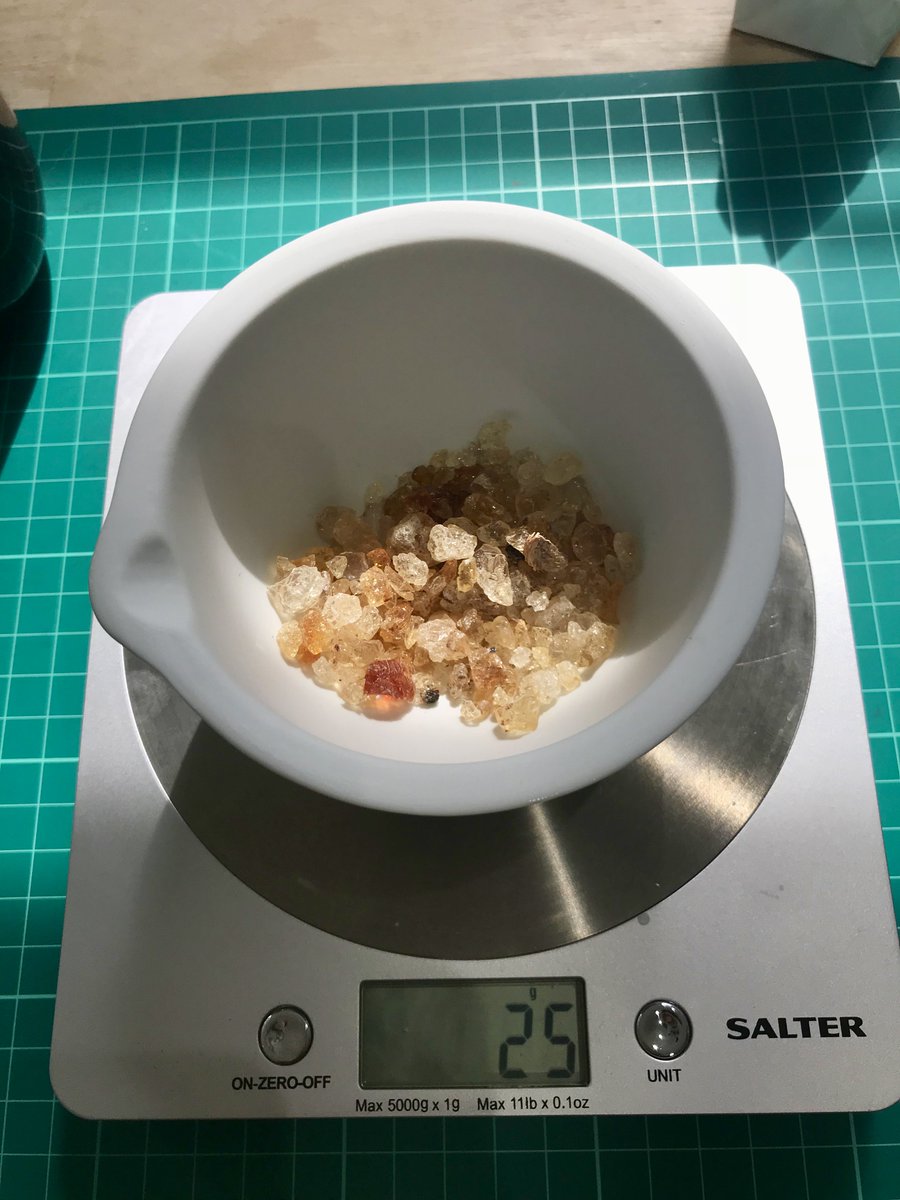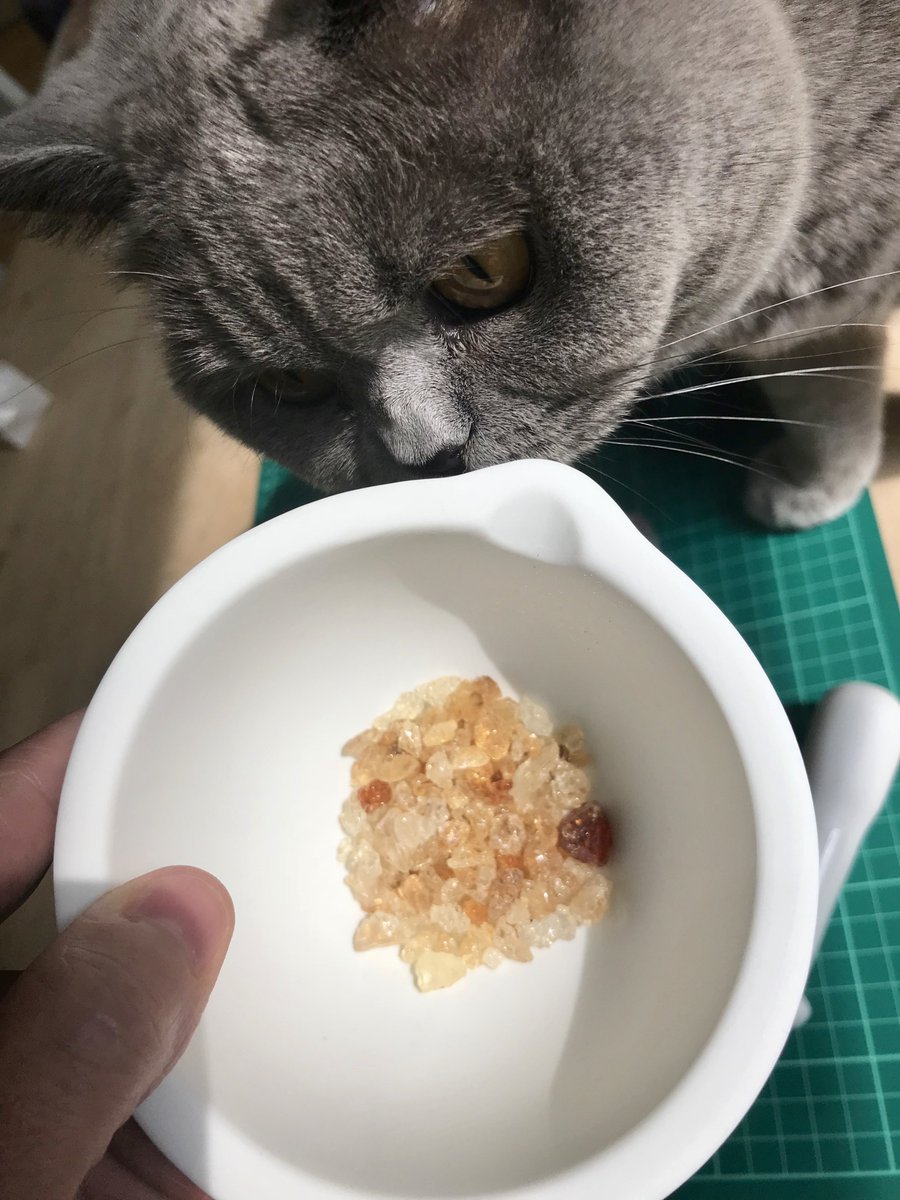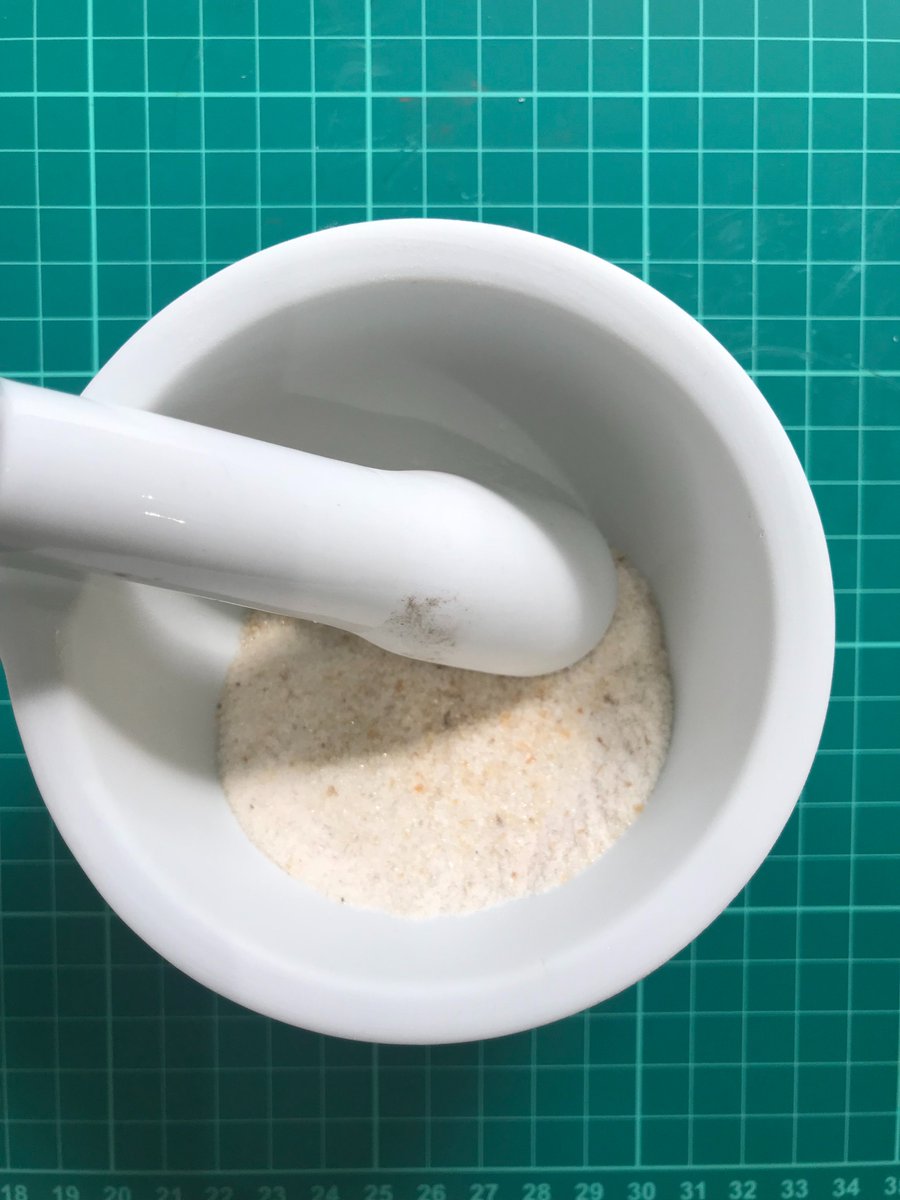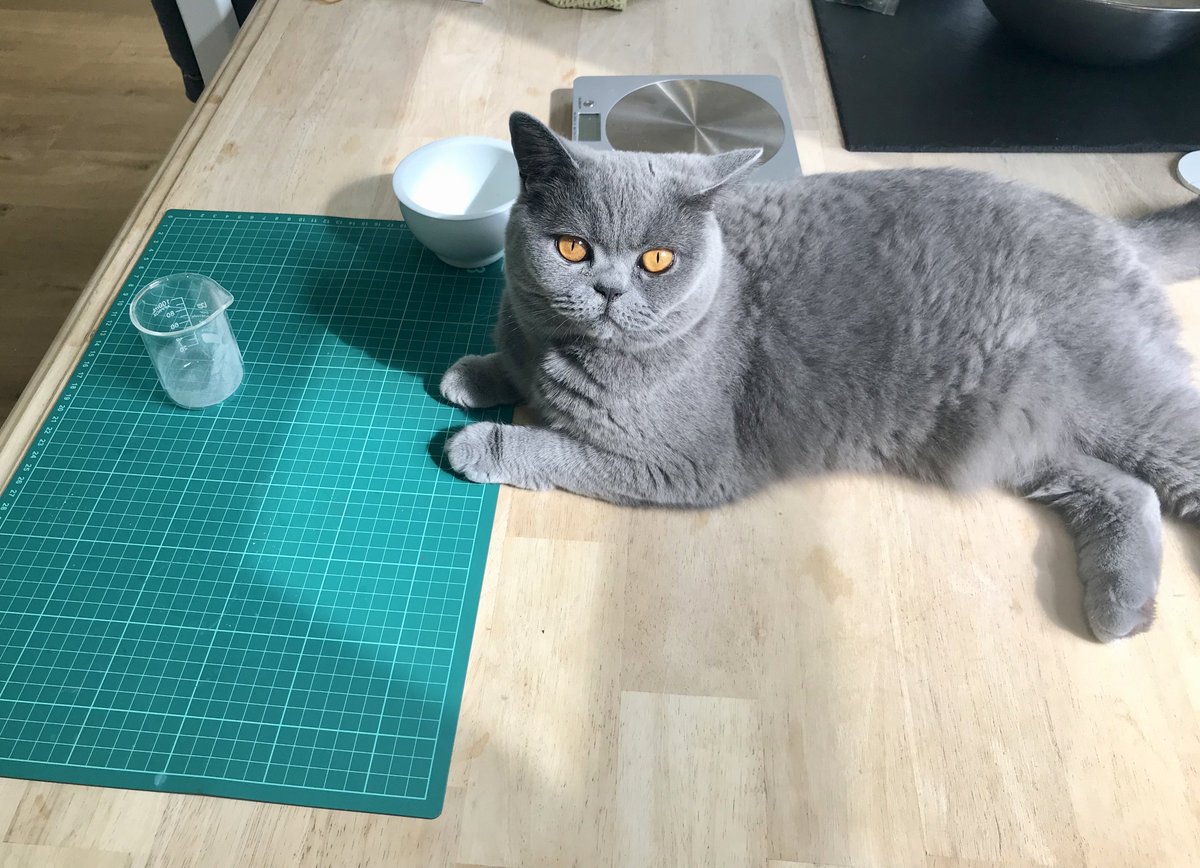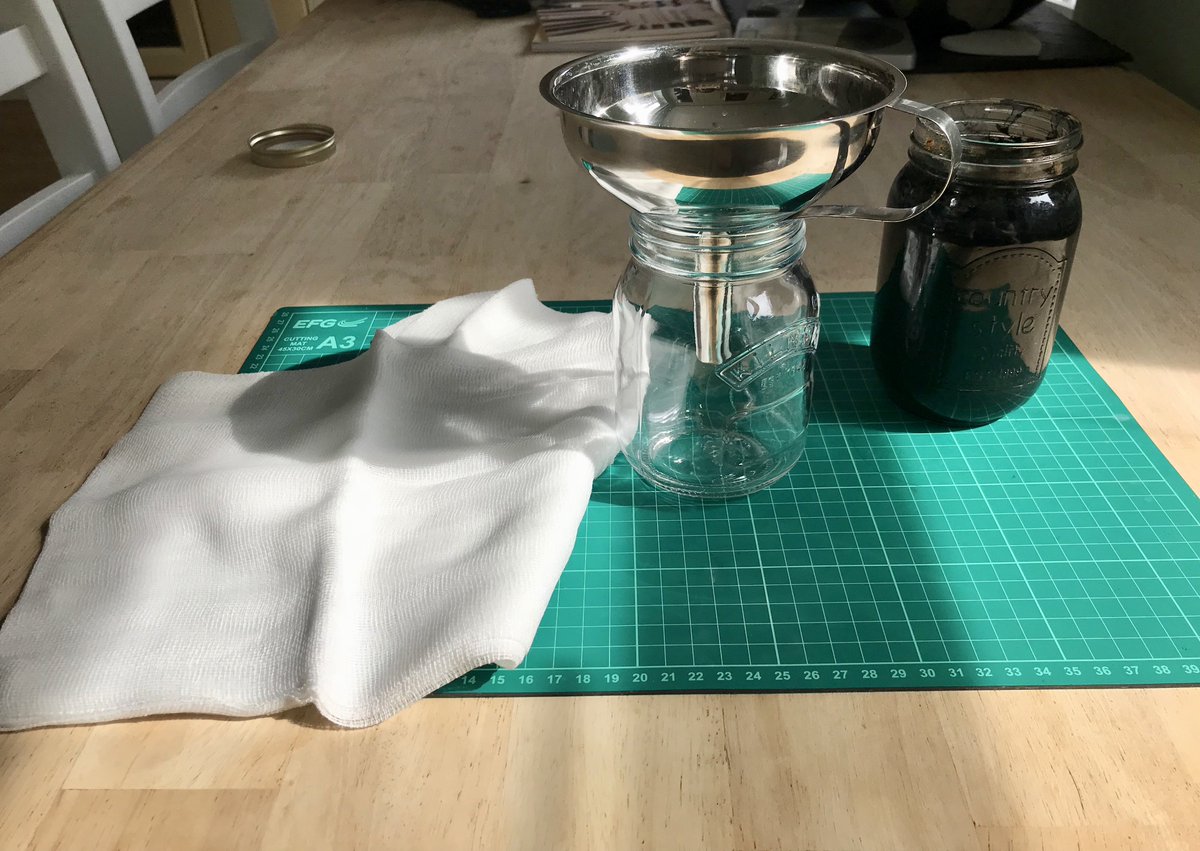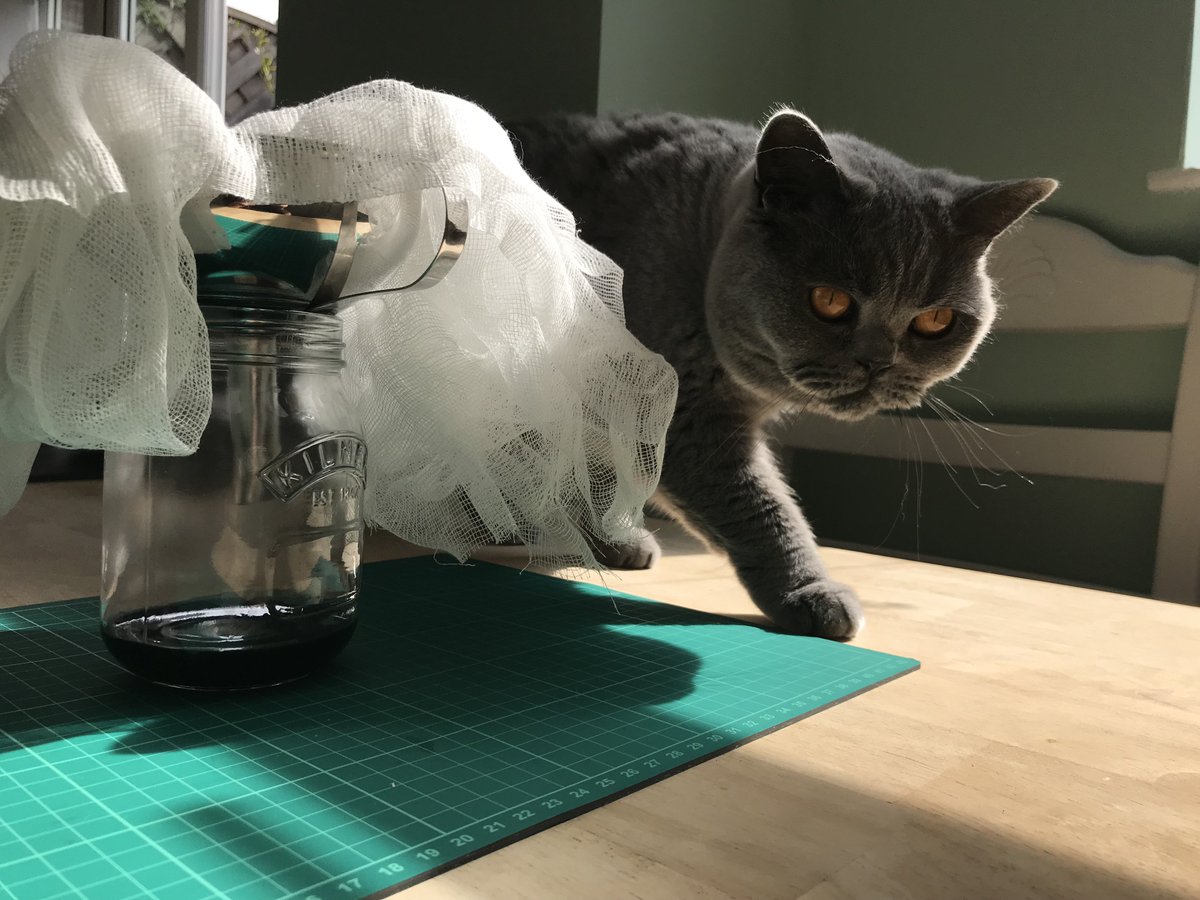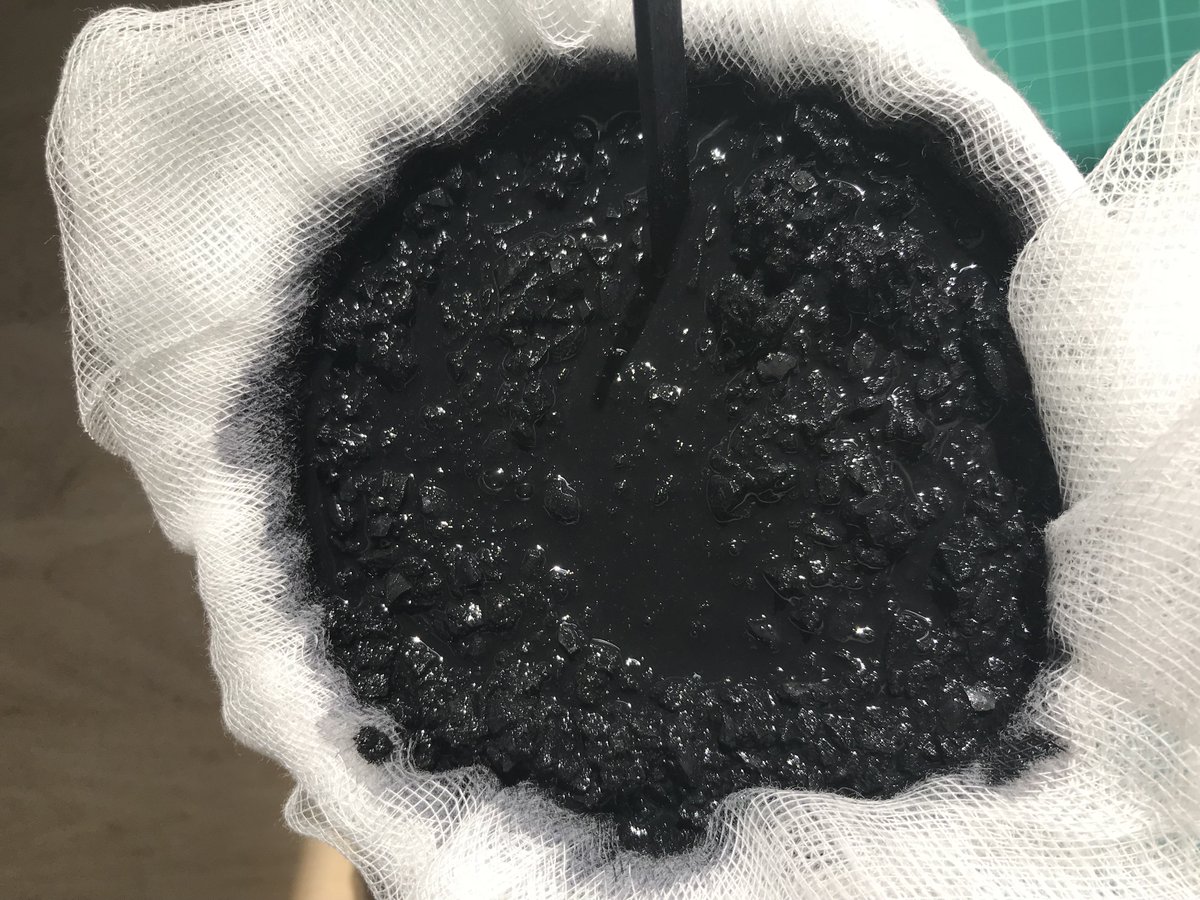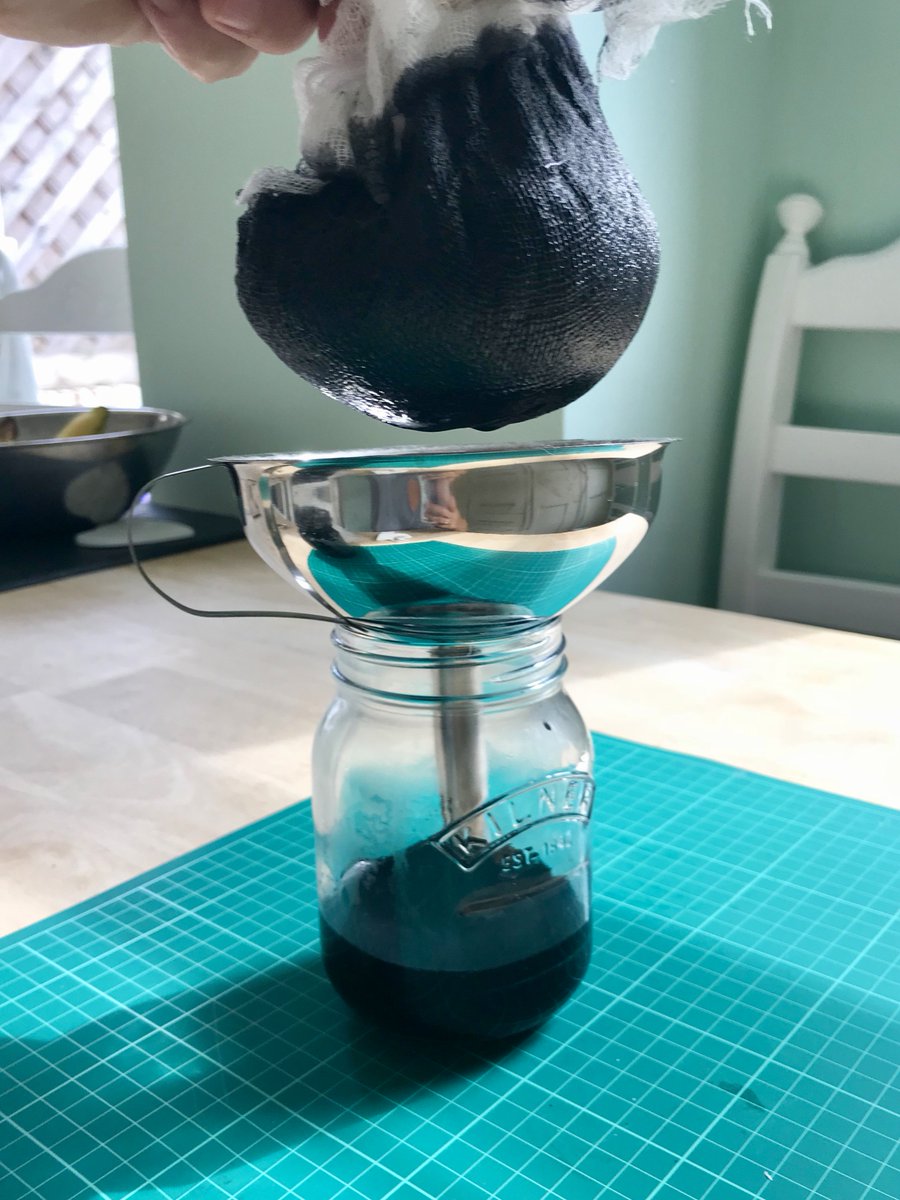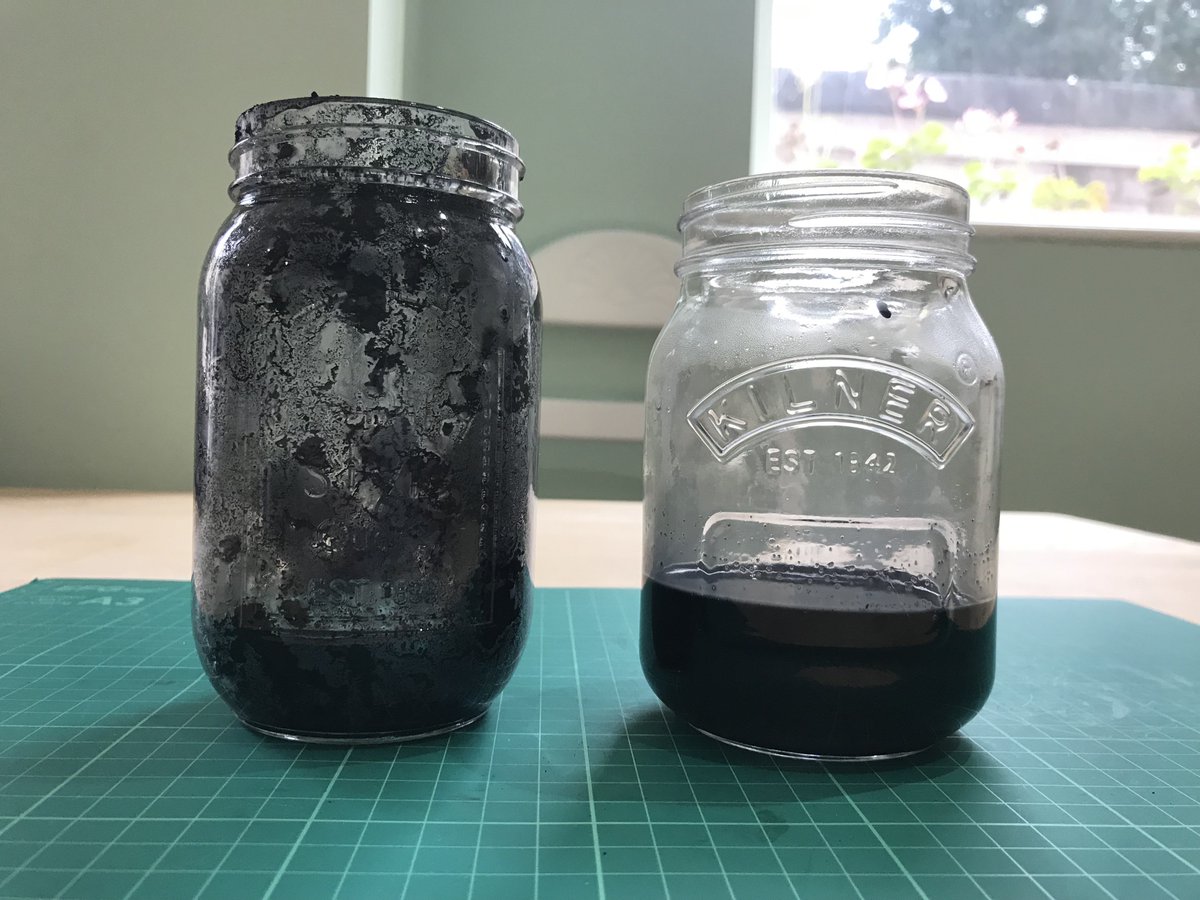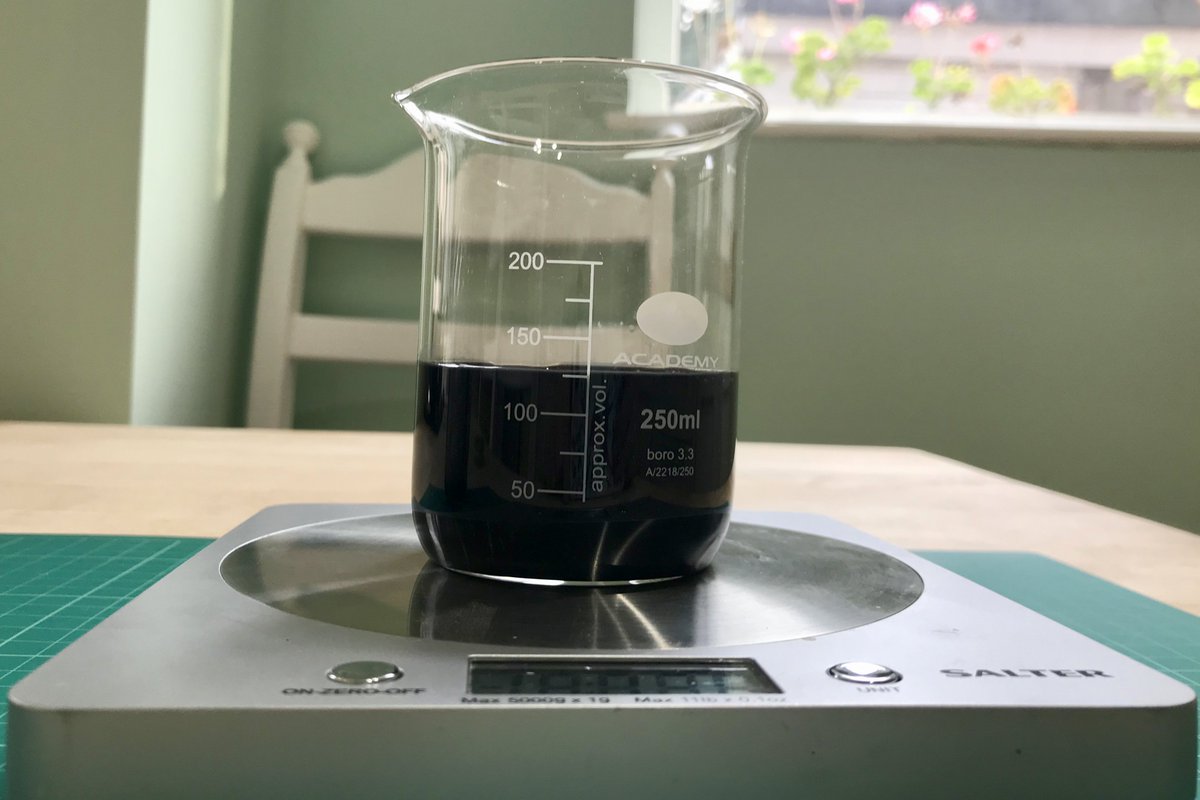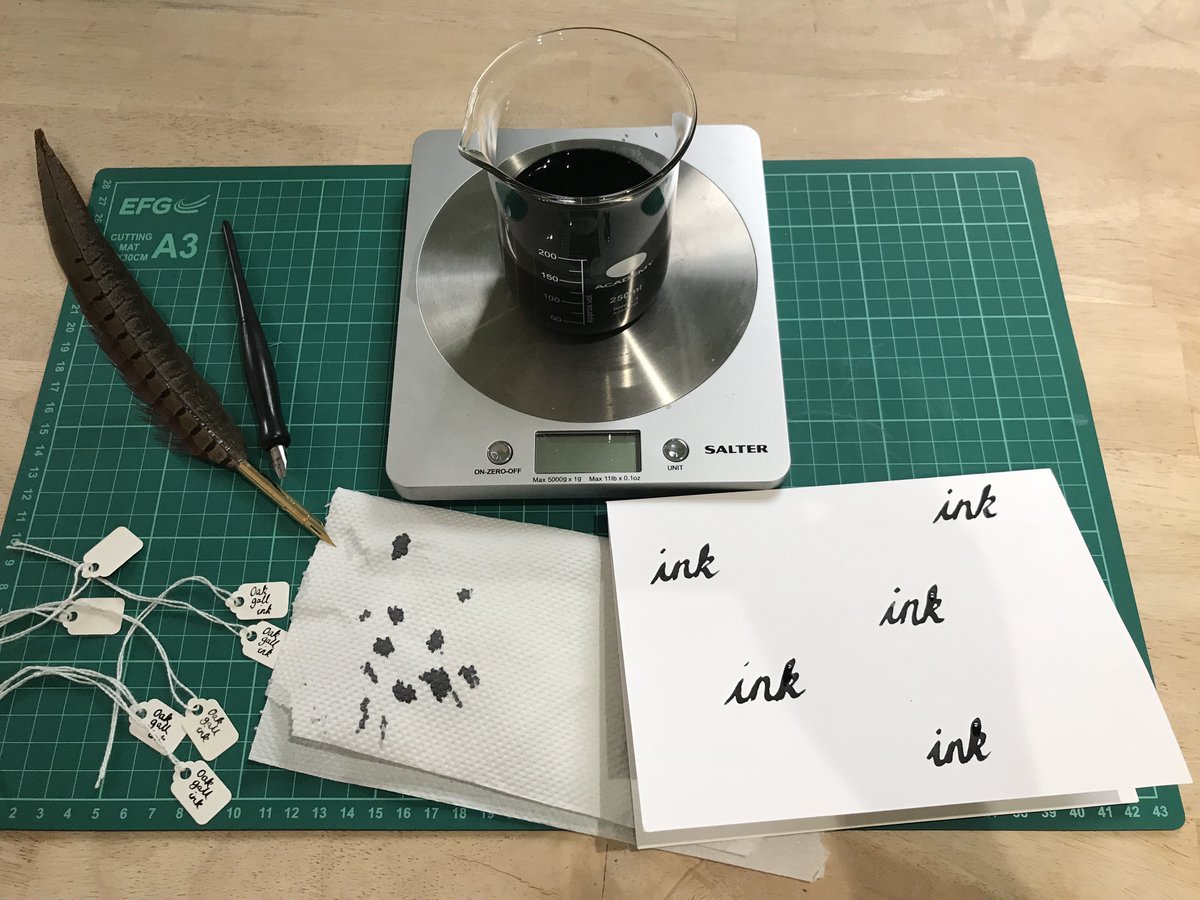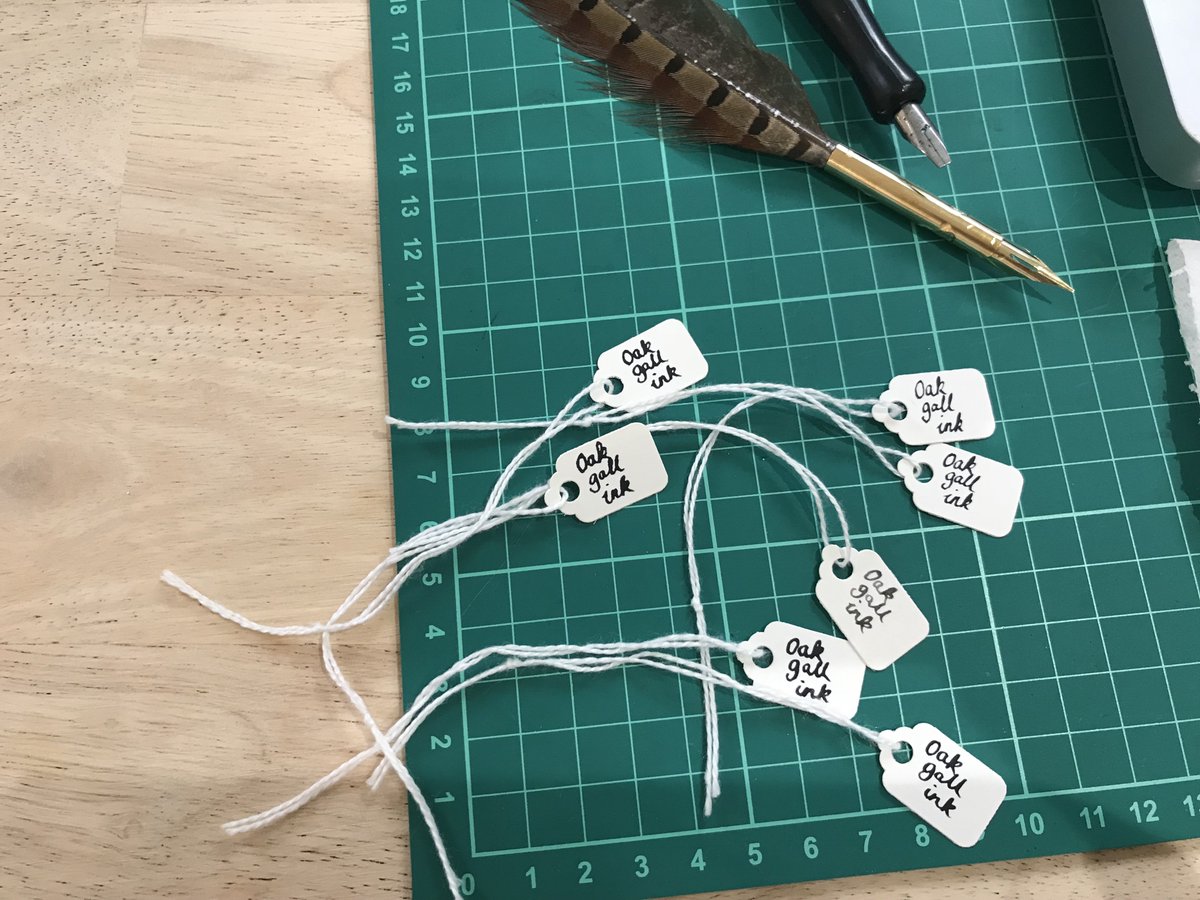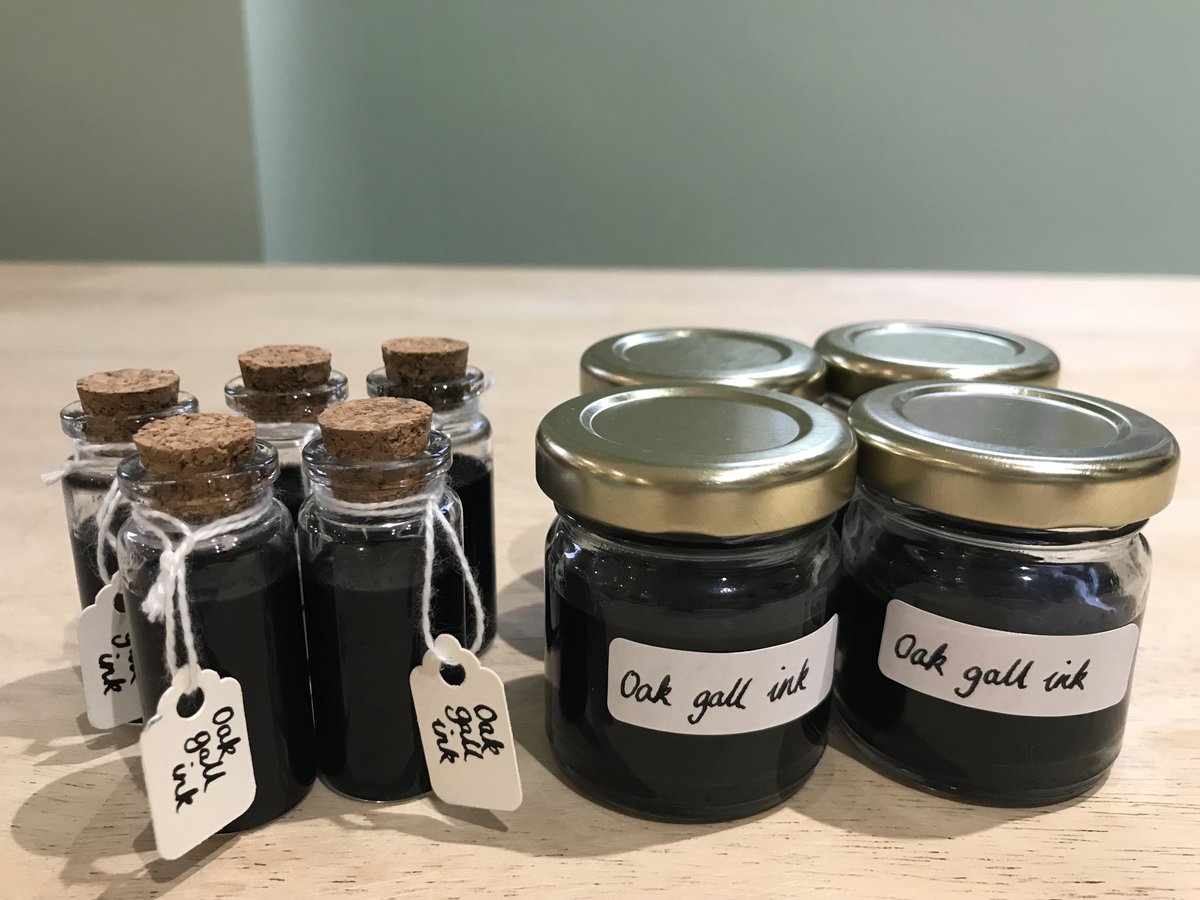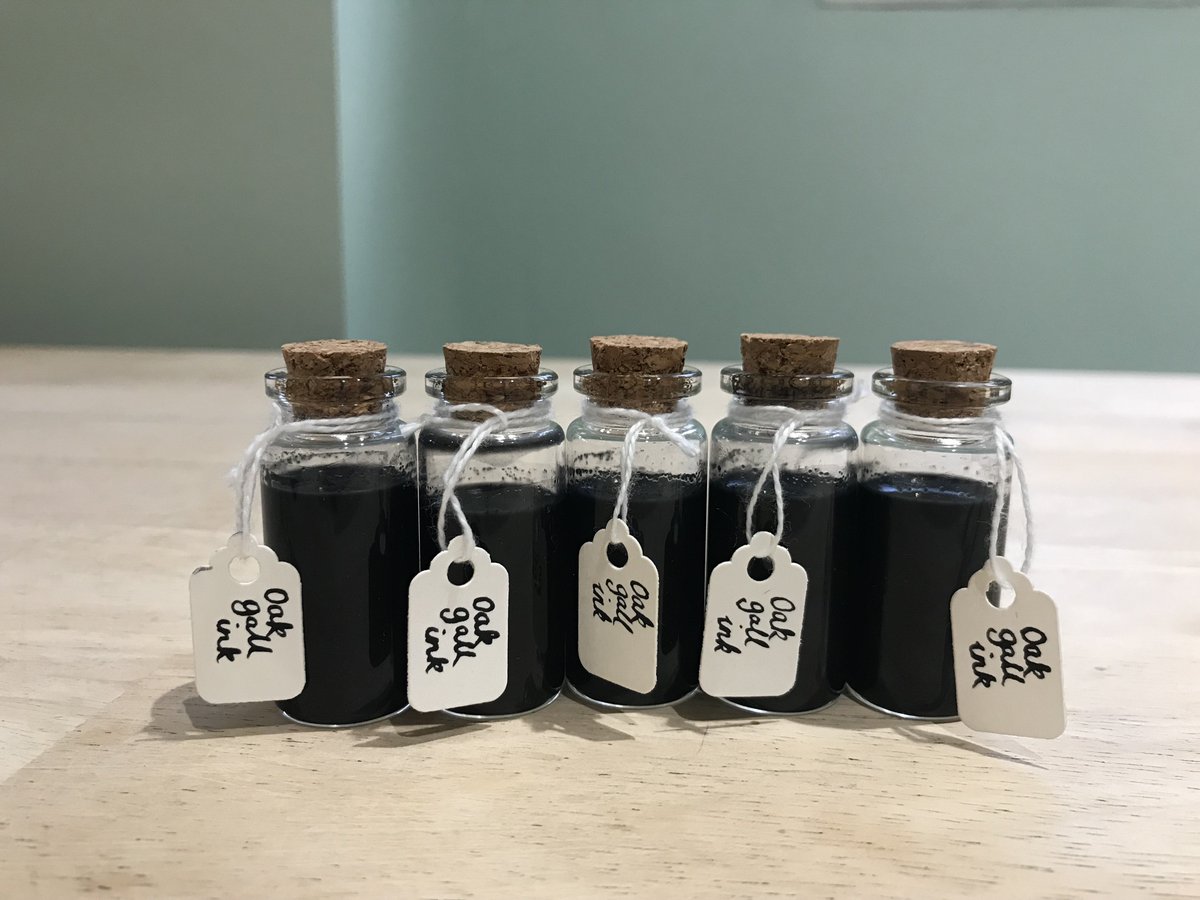Here& #39;s a thread about the iron gall ink I have just made. I’m not artistic, crafty or very in tune with nature, but as someone who researches medieval manuscripts, I wanted to experience the process. And surprisingly, so did my cat #heritagecrafts #irongallink #medievaltwitter
2. There is some open ground behind my house, so I went for a forage for some oak galls. I didn& #39;t really know if I would be able to recognise what I was looking for, and it took me a while to find any. But, once I had spotted one, I got my eye in
3. Based on my vast experience of one foraging trip, I found them much easier to spot on smaller, younger oak trees. This little one in particular had loads - I got about twelve from it. In less than an hour, I had collected this lot - 123 grams
4. At first I was terrified that a wasp would emerge as I was separating a gall from a branch, or I would get swarmed by angry wasp parents, but after a while it all felt lovely and I felt tuned-in to nature and the past. Although I did scream when a dragonfly flew near my face.
5. I loosely followed the recipe from @LovettPatricia& #39;s book ‘Tools and Materials for Calligraphy’ (there are plenty of other recipes - the Iron Gall Ink website is very useful https://irongallink.org/igi_index.html ).">https://irongallink.org/igi_index... First, the fun part - smashing up the galls. I weighed out 80 grams
6. I put them in a clear plastic bag rather than a newspaper, mainly because I wanted to see what was happening. Still worried about baby wasps, but apparently this did not bother medievalists, they actually preferred the grub still inside  https://abs.twimg.com/emoji/v2/... draggable="false" alt="😬" title="Grimacing face" aria-label="Emoji: Grimacing face">
https://abs.twimg.com/emoji/v2/... draggable="false" alt="😬" title="Grimacing face" aria-label="Emoji: Grimacing face">
7. So, after some cathartic smashing and freeing of small insects that crawled out (no grubs, just earwigs) in 5/10 minutes I had this bag of small chunks. I liked Patricia’s recipe because you didn’t have to grind them down into a powder. Then I poured them into a jam-jar
8. Most recipes recommend rain water, but it& #39;s been a long dry summer and I think our rainwater is probably more polluted than medieval rain, so I used distilled water (about 300ml). Gave it a quick stir with a lolly stick and then left it on a sunny windowsill for three days
9. It went such a lovely deep brown. Next step was adding the ferrous sulphate (50 grams). Also known as copperas or green vitriol. I just got this off ebay. Apparently you can make your own with rusty nails, but I really wouldn& #39;t recommend that
10. The video shows how instantaneous the colour change is. At this stage my cat decided to get involved. NB - now the mixture stains, so mind your fingers. And your cats.
11. We don’t want a repeat of this:
http://museum-of-artifacts.blogspot.com/2015/10/inky-paw-prints-left-by-cat-on-15th.html">https://museum-of-artifacts.blogspot.com/2015/10/i... Photo: Emir O. Filipović
http://museum-of-artifacts.blogspot.com/2015/10/inky-paw-prints-left-by-cat-on-15th.html">https://museum-of-artifacts.blogspot.com/2015/10/i... Photo: Emir O. Filipović
12. The mixture went a really intense black. Almost blue-black. The cat was forbidden to go near the windowsill. The lolly stick was stained beyond redemption.
14. After a few more days, the next step was to grind up 25 grams of gum arabic into powder. Chloe was now fully onboard with the ink-making process.
15. The gum arabic was beautiful and sparkled like jewels. Chloe approved. Gum arabic thickens ink and enables to it adhere to the writing surface.
16. After I had ground it down to a powder, I added it to the mixture of oak galls and ferrous sulphate. Once again Chloe photobombed the video. Not sure that I could see that much difference in the mixture, but left again for a day on the windowsill
18. Last stage! (Thanks for sticking with me) I strained the mixture through a muslin cloth using a funnel. More sensible people would probably use gloves for this part. I left it for a while to let gravity do its thing. Chloe stealthily checked my progress.
20. Time to test - and ... success! The ink was a lovely black, and it seemed to flow nicely. I unashamedly used a quill pen I bought from Harry Potter world to write the labels. Calligraphers will probably be horrified.
21. So now I have lots of ink and some lovely gifts for my friends. The process took about a week, but most of that was standing time. It wasn’t too messy and no inky pawprints. (Although it was no coincidence I did this in the week my children were away...)
22. I wanted to do this to get a better understanding of the medieval process, and I really did. Its amazing that I’ve ended up with something I can use. And it was really easy. And - I have a surprising new respect for wasps. http://blogs.bl.uk/digitisedmanuscripts/2014/06/the-burden-of-writing-scribes-in-medieval-manuscripts.html">https://blogs.bl.uk/digitised...
You might also like this thread on making gesso #medievalstuffwithcats https://twitter.com/sarajcharles/status/1080071146329047040">https://twitter.com/sarajchar...
And this one on cutting quills #medievalstuffwithcats https://twitter.com/sarajcharles/status/1103968226835337217?s=21">https://twitter.com/sarajchar...
unroll @threadreaderapp

 Read on Twitter
Read on Twitter